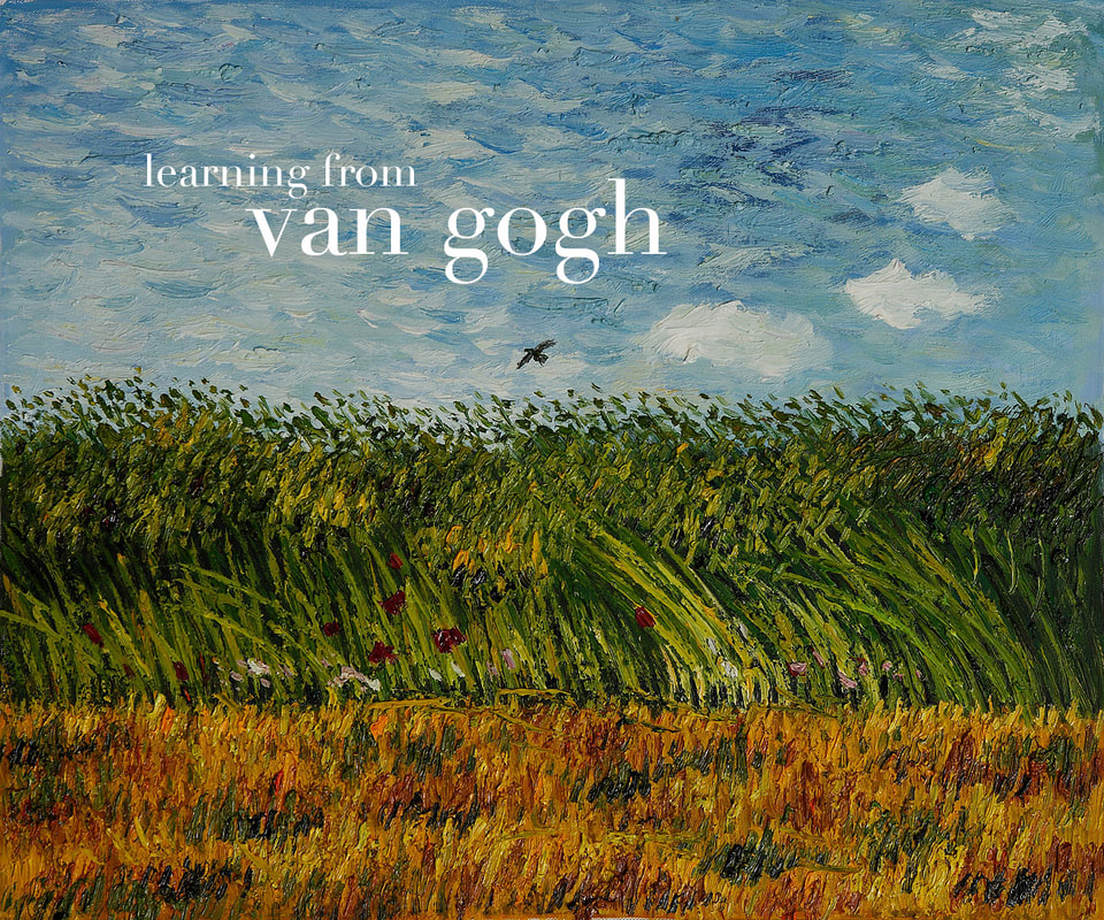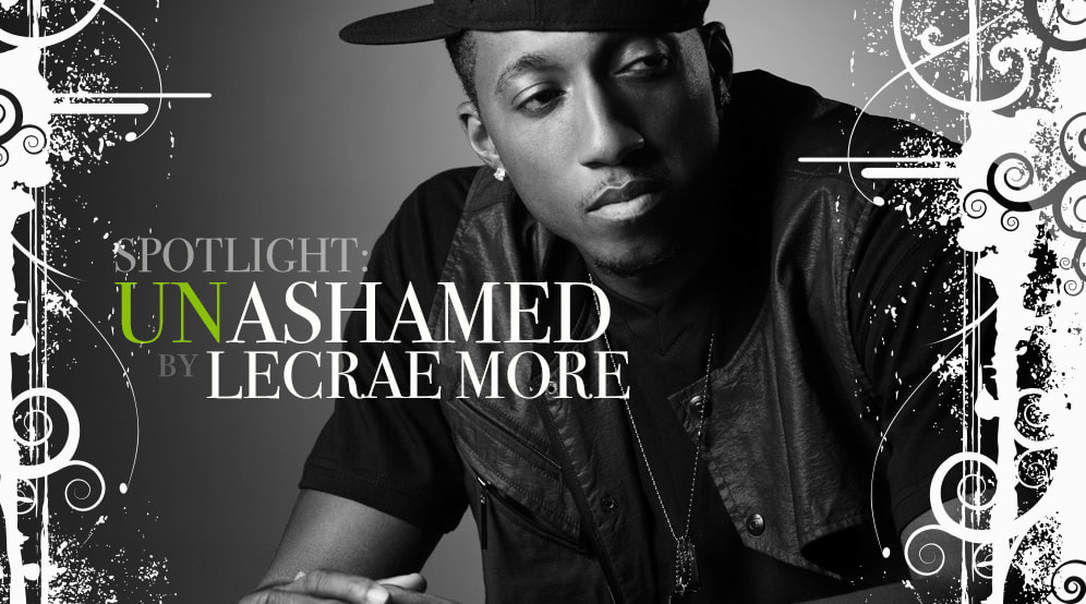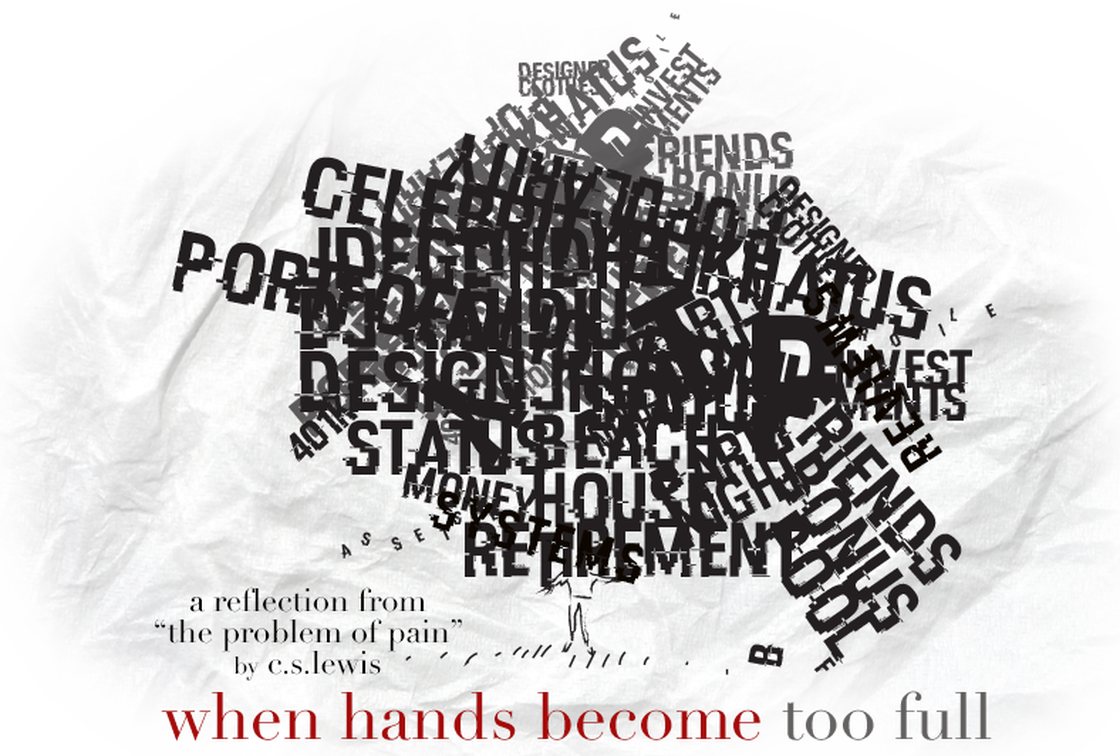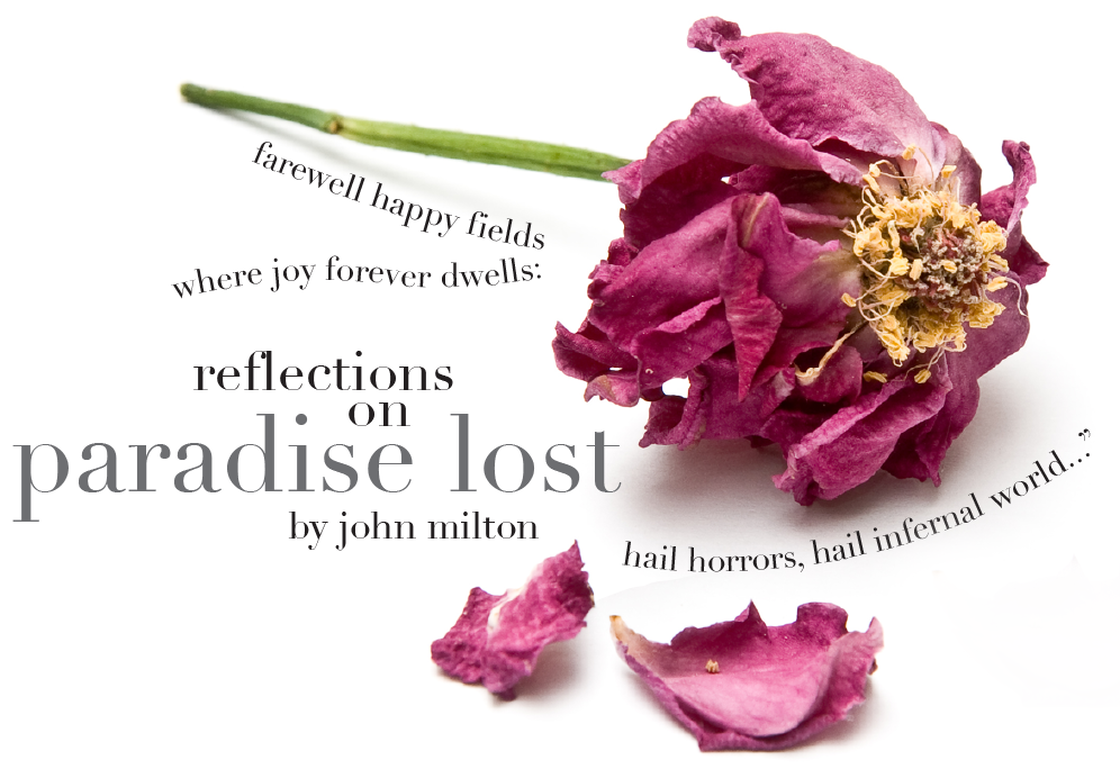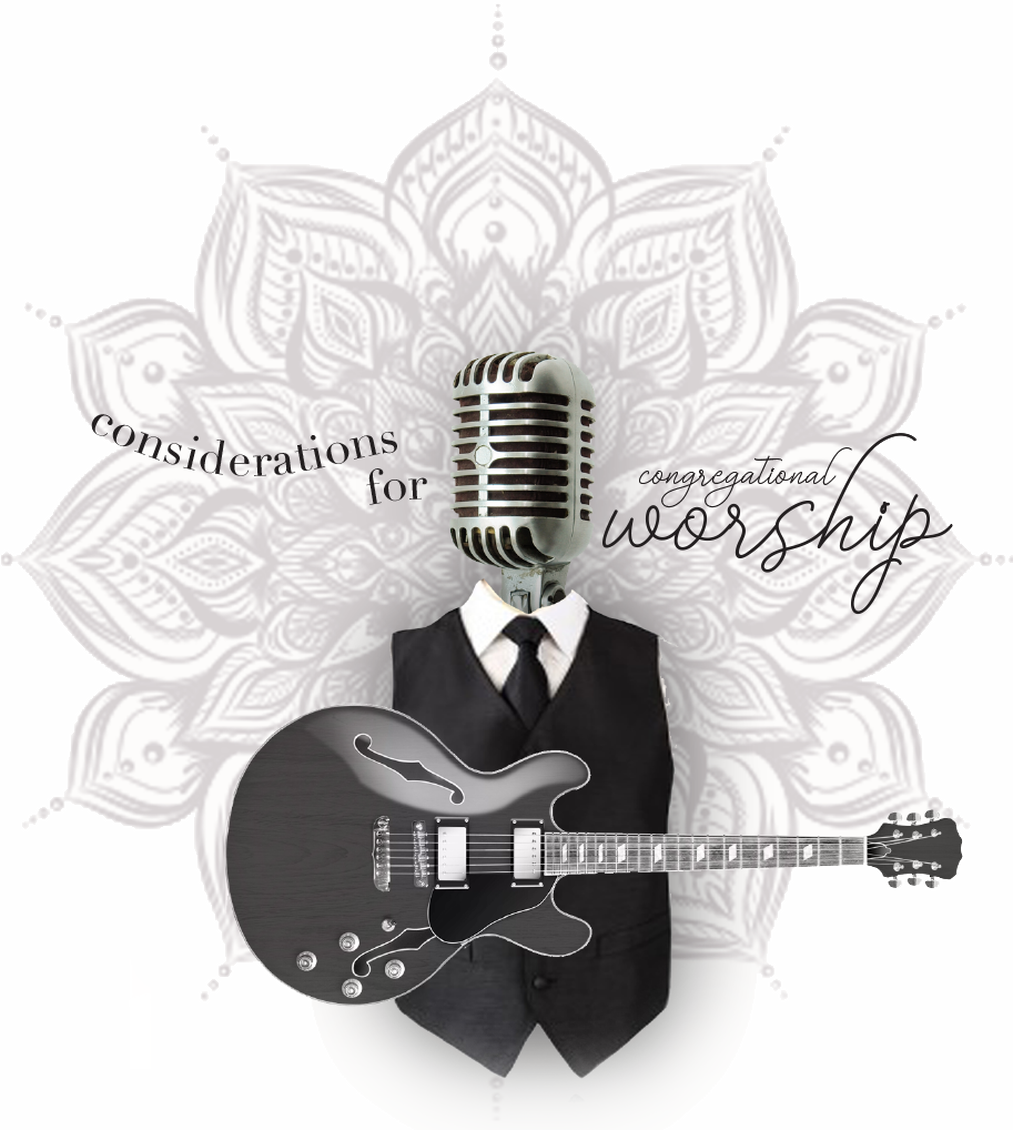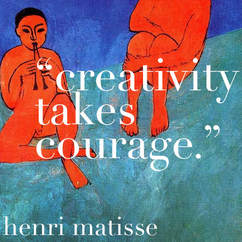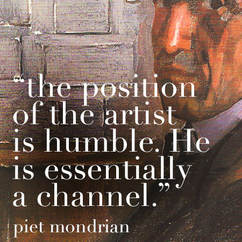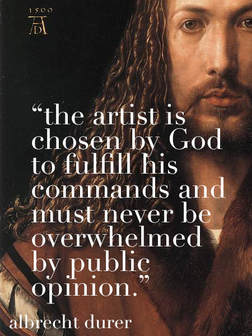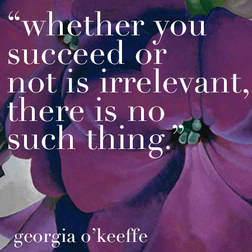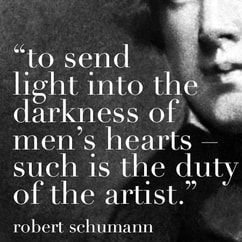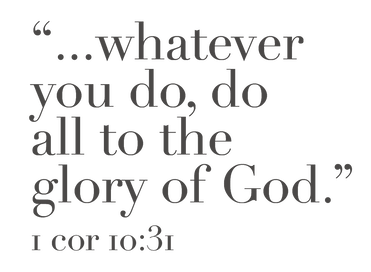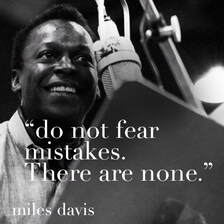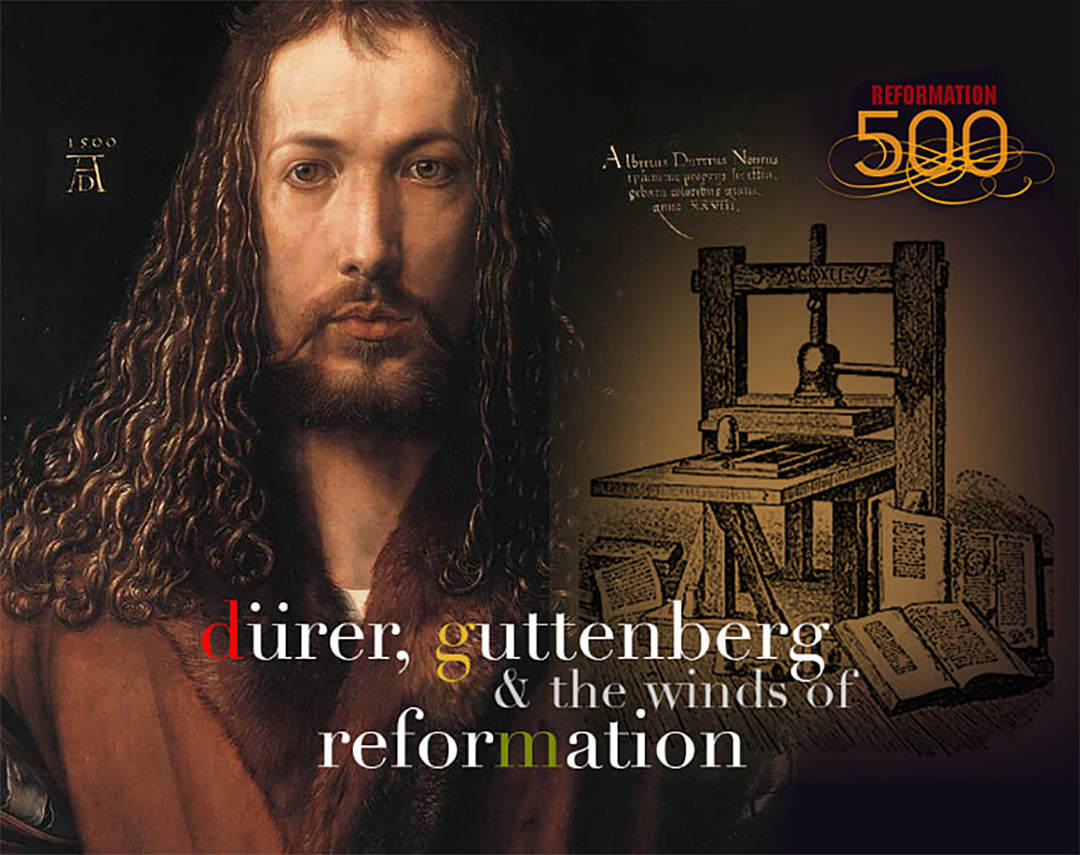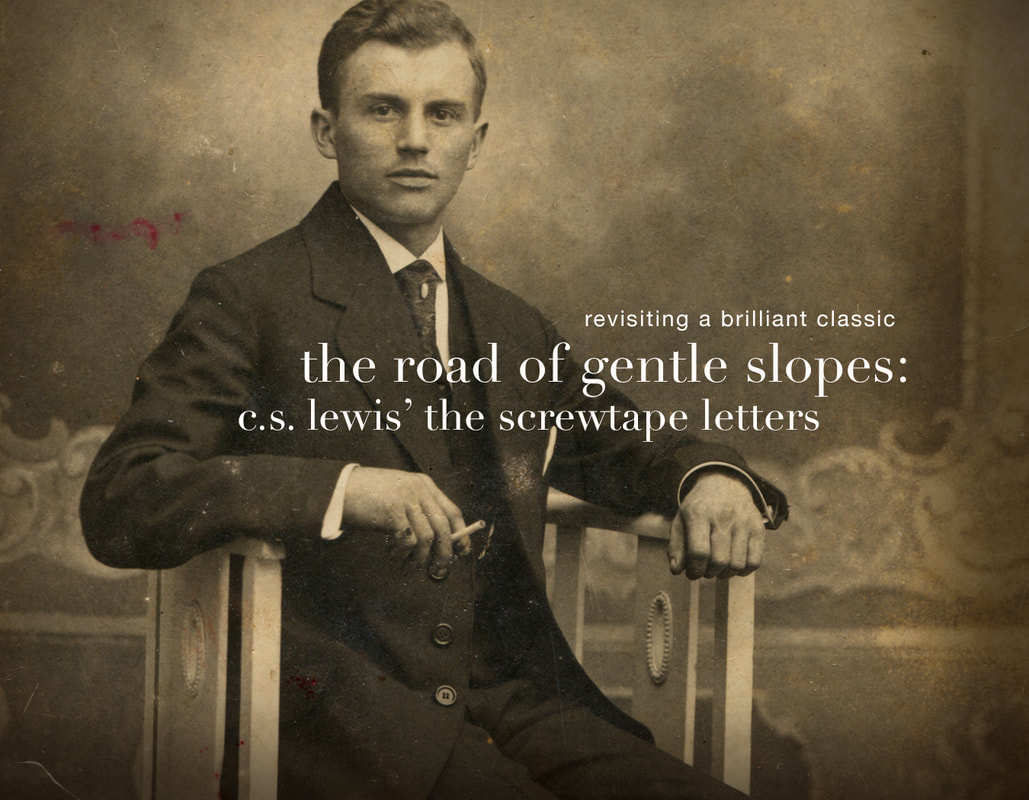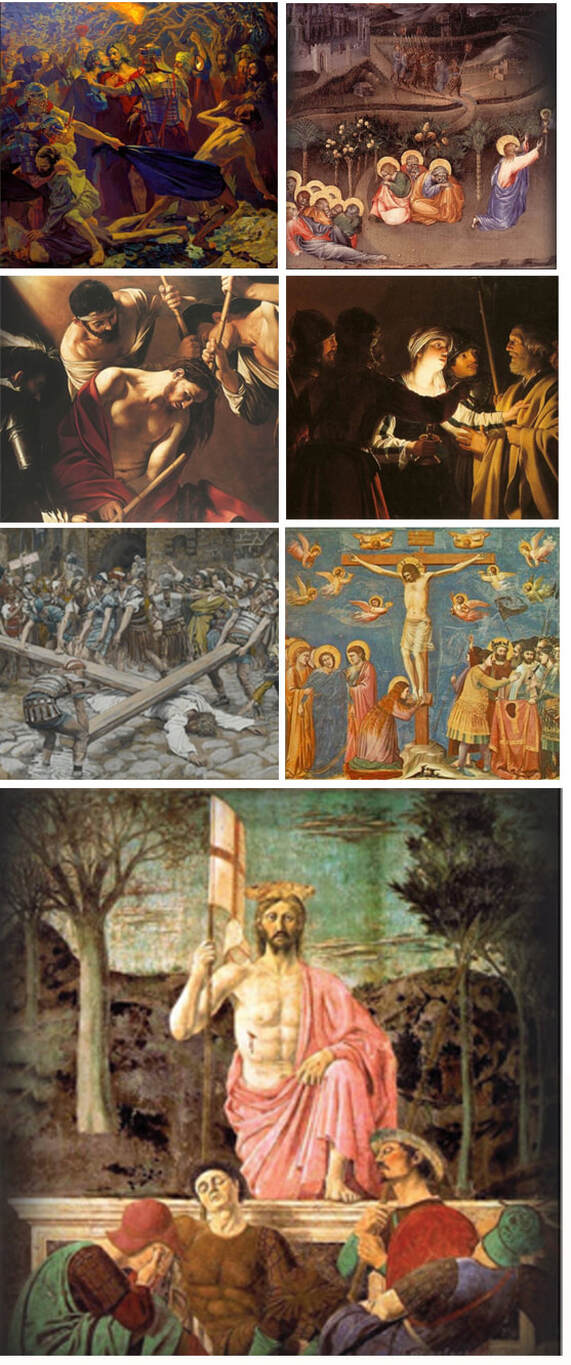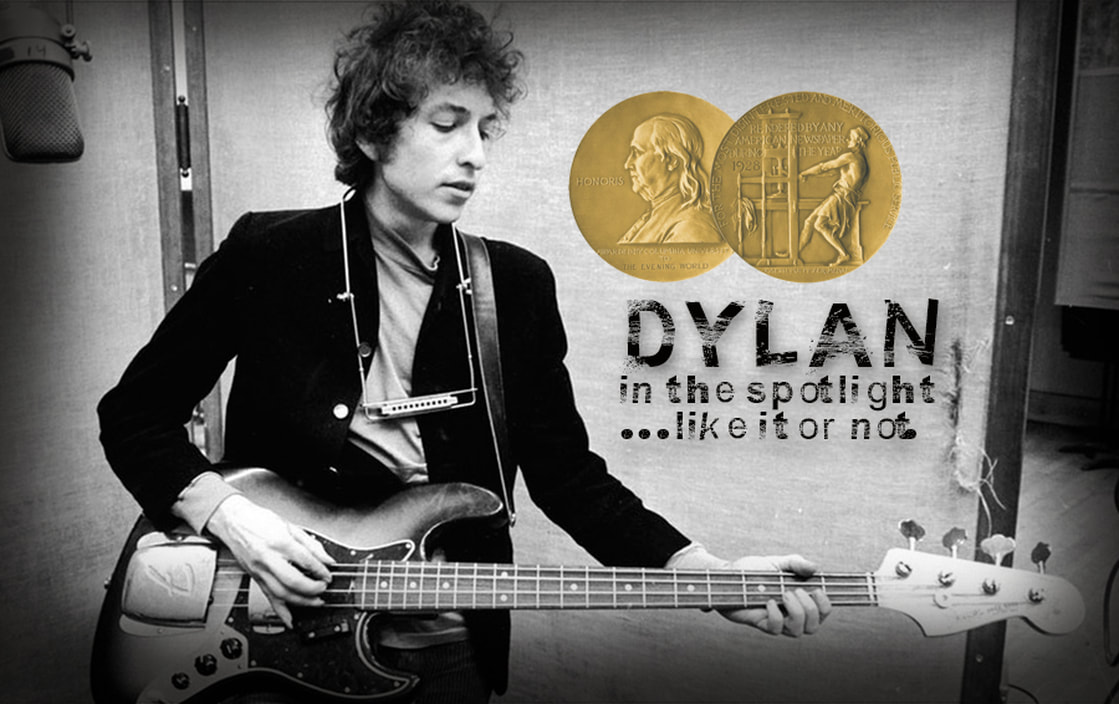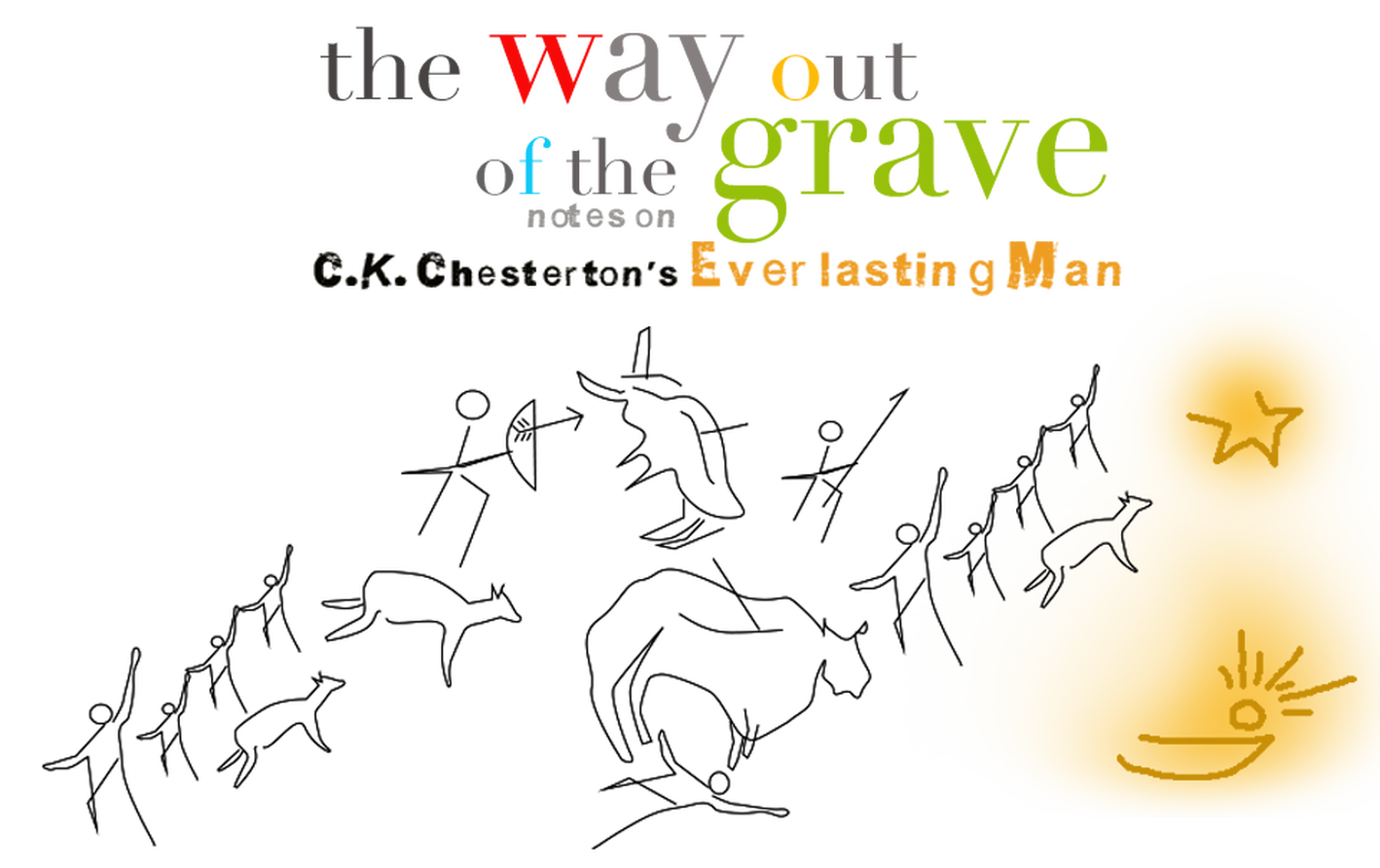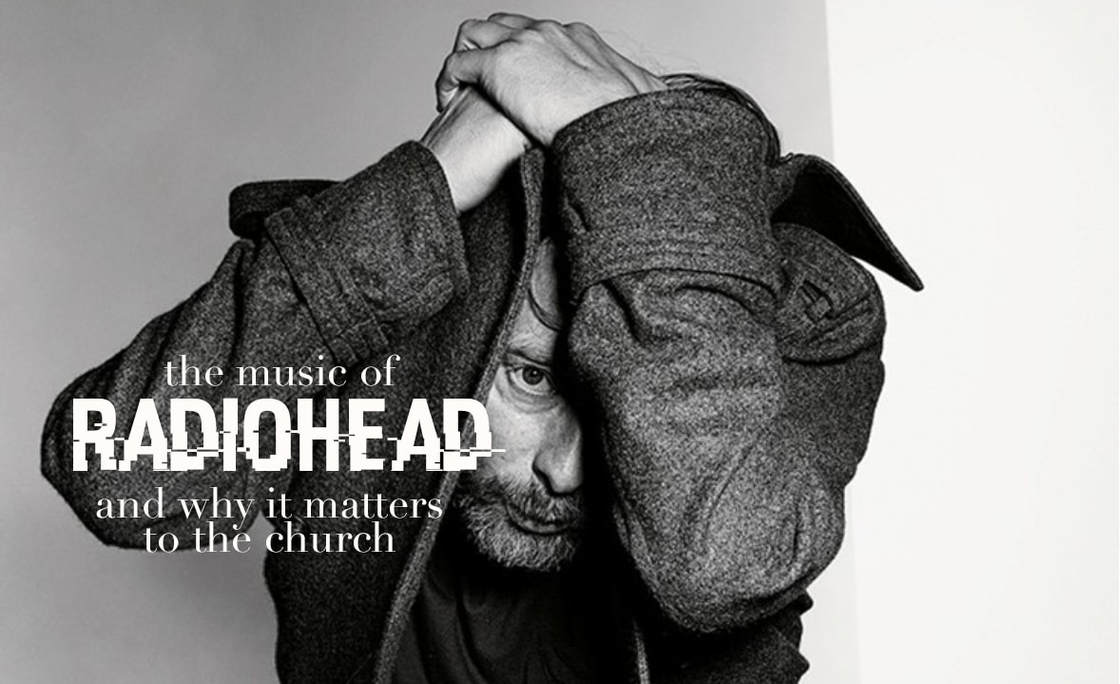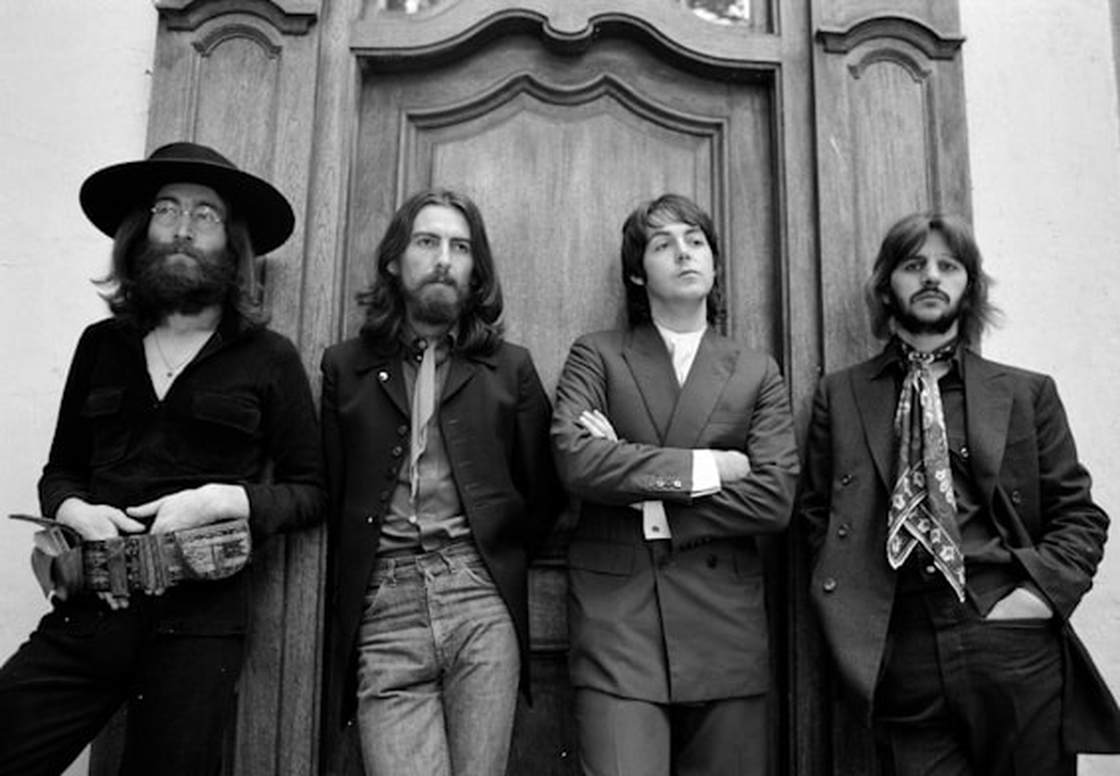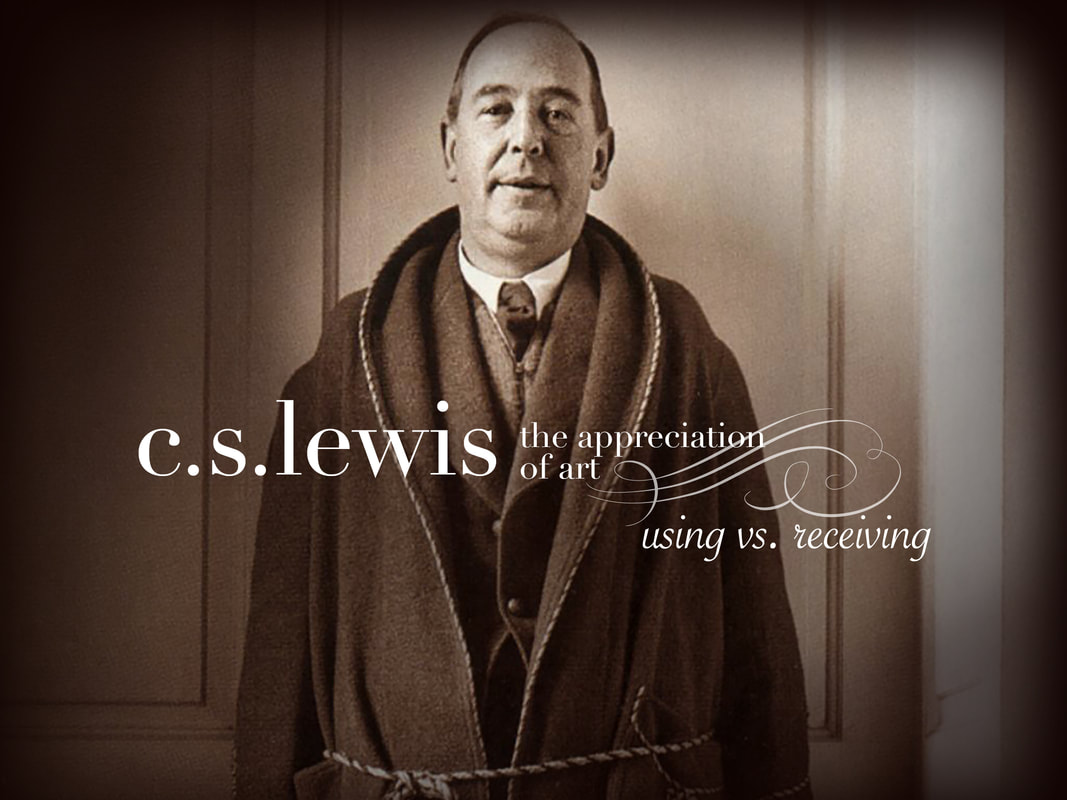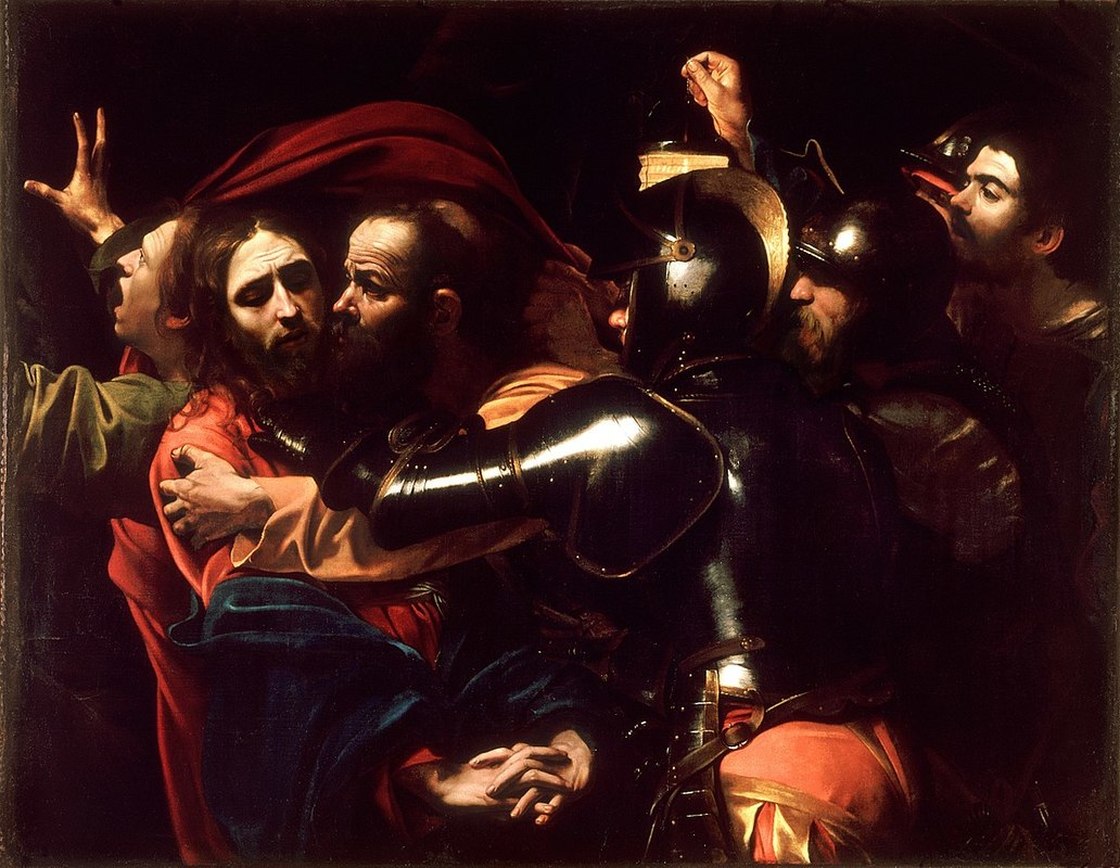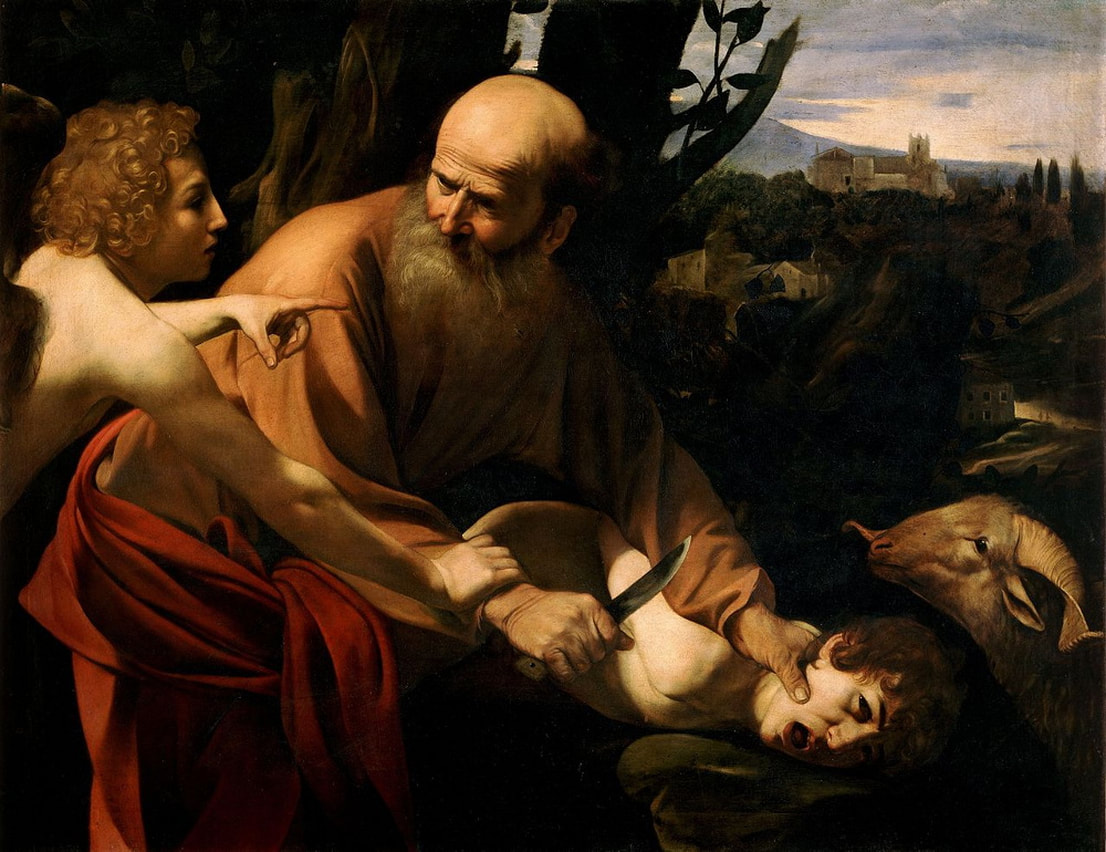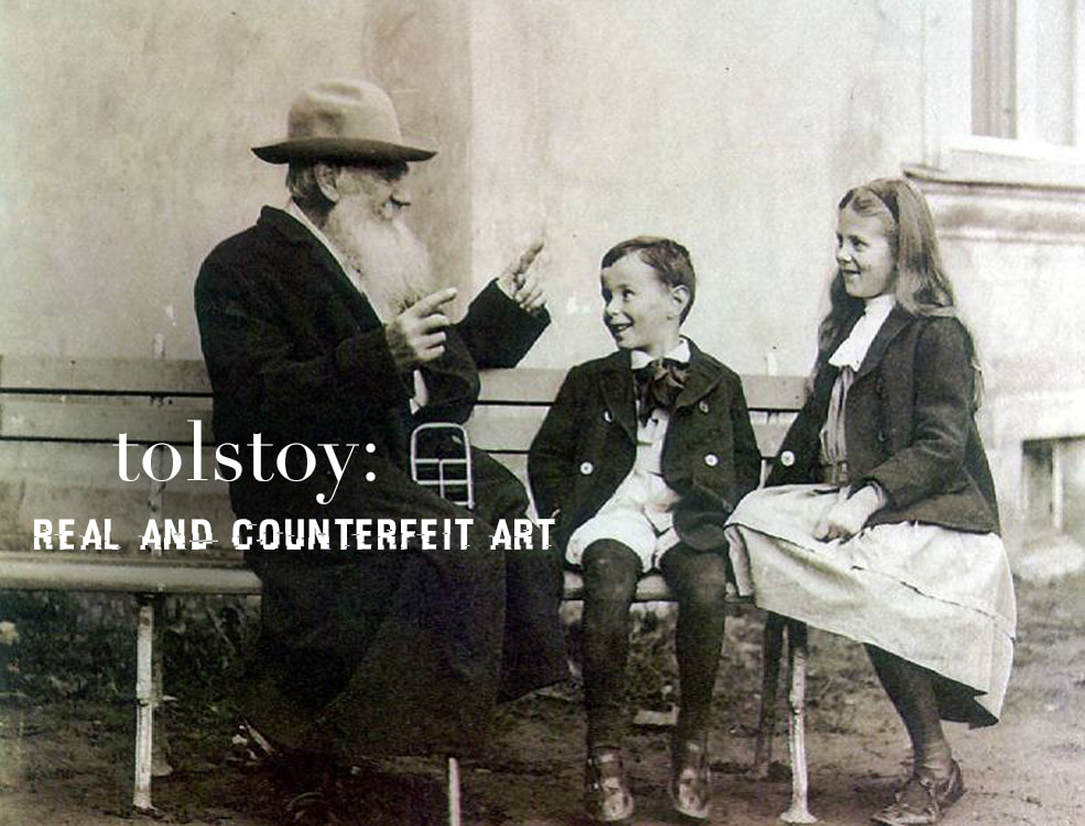|
|
THE ART CAVE is a place to gather comments about art, painting, music and any other creative musings to help us ponder the purpose of art in our culture, or the things that inspire it's most beautiful and true expressions. I WOULD LOVE TO HEAR FROM YOU! Click here to comment, or even offer contributions to this dialogue, which I may add to this site.
|
|
|
|
Going beyond the familiar Christmas songs we associate with her name (In the Bleak Midwinter and Love Came Down for Christmas), English poet Christina Rossetti (1830-1894) was a woman versed in romantic poetry, sonnets, child-like quizzacles. But most apparent in her work is a deep devotion to Christ Himself. These works are not merely beautifully-crafted poems, but we sense strongly her self-effacing tone, her struggle with her own world nature, and the absolute longing to see Christ Himself face-to-face. Her words are sprinkled with the firm resolve that all things will become new in His presence, placing her work is a line of predecessors like George Herbert (17th Century) and Donne, who would parable this longing.
Christina was not unfamiliar with great trail and difficulty: financial ruin in her family, deterioration of her father's physical and mental health; one brother in art school and one occupied in the Excise Office left her with an increasing sense of isolation. Yet, her beautiful work spoke for itself, and it was lauded with widespread critical acclaim, establishing her as THE foremost female poet of the day. Hopkins and Tennyson were among those who showered he with praise. She was a woman of social conscience: opposing slavery in the American South, opposing cruelty to animals (in the prevalent practice of animal experimentation, and the exploitation of girls in under-age prostitution. Her exposure to these stains on the human condition, coupled with her own struggles, brought her to a place of vulnerability from which the springs of godly expression would inspire men and women through the centuries. Among the many excerpts: |
|
|
|
[from] UP HILL
Does the road wind up-hill all the way? Yes, to the very end. Will the day's journey take the whole long day? From morn to night, my friend. But is there for the night a resting place? A roof for when the slow dark hours begin. May not the darkness hide it from my face? You cannot miss that inn. [from] THE LOWEST PLACE Give me the lowest place: not that I dare Ask for that lowest place, but Thou hast died That I might live and share Thy glory by Thy side. Give me the lowest place: or if not for me That lowest place too high, make one more low Where I may sit and see My God and love Thee so. |
[from] A DOUBLE SONNET OF SONNETS
Tread softly! all the earth is holy ground. It may be, could we look with seeing eyes, This spot we stand on is Paradise Where dead have come to life and lost be found, Where Faith has triumphed, Martyrdom been crowned, Where fools have foiled the wisdom of the wise; From this same spot the dust of saints may rise, And the King's prisoners come to light unbound. O earth, earth, earth, hear thou thy Maker's Word: "Thy dead thou shalt give up, not hide thy slain – Some who went weeping forth shall come again Rejoicing from the east or from the west, As doves fly to their windows, love's own bird Contented and desirous to the nest. |
|
|
It's not the thick paint strokes. It's not the juxtaposed colors placed with thick palette knife. Nor is it the now world-famous works of this incredible talent: a world filled with starry nights, sunflowers and self portraits with bandaged ear. The most important thing for any artist to learn from Vincent Van Gogh is his ability to forge through self-doubt, even unto his eventually pre-mature death at the age of thirty-seven. His brother Theo recorded that Vincent's last words were, "This sadness will last forever." He lived what our culture would determine a miserably misguided life. Yet, consider the following:
MAJORING IN FAILURE: He considered his life a failure. It was difficult for him to meet people, and the one thing he wanted more than anything in life was a loving wife and children, a fate which avoided him. He died in poverty. He once reflected, "The diseases that we civilized people labor under most are melancholy and pessimism." A LATE BLOOMER: Like the sunflowers so readily associated with him, he was a late bloomer. Van Gogh did not start painting until the ripe age of twenty-seven... far from being a childhood prodigy. He had hoped to become a missionary in the Dutch Reformed Church like his father. He'd dabbled in art dealership. FAR FROM THE ULTIMATE STUDIO: He completed his most renown painting while serving time in a mental hospital in Saint-Remy-de-Provence in France. PAINTING BY NUMBERS: Within a ten-year period as a painter, he sold ONE painting while he was alive, called The Red Vineyard. ONE. Yet, the astonishing fact is that during that 10-year period he completed 900 paintings. A picture of a driven man who was somehow able to battle the voices of failure to find his own expression. If there is a take-away from this incredible life, it is to persist, acknowledge what has been given you and be relentless in expressing. Renew your mind. Determine what 'success' is: Is it how many shows of your work? Monetary provision? Public recognition? Having the 'right' set-up? Then take in the beauty of his work. Tidbits: It has been thought that Vincent committed suicide, however, there is also speculation that he was show by a local teenager. His most expensive painting, Portrait of Dr. Gachet, is valued at $148.6 million dollars. Vincent has a brother with the exact same name. The earlier Vincent was stillborn in 1852. |
|
|
|
John Bunyan is perhaps best known for his classic work, Pilgrim's Progress. What perhaps is less known are the circumstances under which he wrote. Bunyan was serving a 12-year prison sentence for failing to stop preaching the gospel. He had a devoted wife, four children who he adored (he was tremendously distraught for his blind daughter during his incarceration). We get a sense of his writing genius through this classic tale of travel to the Celestial City... but equally profound is his short autobiography written from the same prison cell: Grace Abounding to the Chief of Sinners. Here we get a picture into the man himself: his foibles as a youngster, his struggle to come to living faith, and his many ups and downs through that period, with interchangeability from incredible highs to devastating lows. Bunyan knew spiritual battle. Coming to Jesus Christ was certainly not a bed of roses on a polyanic path. One cannot help but feel great empathy for him, but this window into his private life is an inspiration to ALL to persevere – who seek godly living in the midst of a chaotic world. Consider this excerpt from the conclusion of Grace Abounding:
"Of all temptation in my life... the question regarding the being of God and truth of the gospel is the worst...when the foundations are destroyed, what can the righteous do?" "Sometimes, when after committing sin, I have looked for sore chastisement from the hand of God... {rather} found the discovery of His grace..." "It is a goodly thing to be on our knees with Christ in our arms..." "I find to this day seven abominations in my heart: 1) inclinations to unbelief 2) suddenly to forget the love and mercy that Christ manifested 3) a leaning to the works of the law 4) wanderings and coldness in prayer 5) to forget to watch for that I pray for 6) apt to murmer because I have no more and yet ready to abuse what I have 7) when I would do good, evil is present with me. These things I continually see and feel... the wisdom of God doth order them for my good: 1) they make me abhor myself 2) they keep me from trusting my heart 3) they convict me of all insufficiency and all inherited righteousness. 4) They show me the necessity of flying to Jesus 5) They press me to pray unto God 6) They show me the need I have to watch and be sober 7) They provoke me to look to God, through Christ, to help me and carry me through this world. May we all find inspiration and prompting through Bunyan's example to be on-purpose in our devotions, that we may "fly to Jesus", Amen. |
|
|
|
Two-time Grammy winner LeCrae More tells his incredibly transparent story, and in doing so, shows us that he's had more than his share of adversities: childhood abuse, drugs, alcohol, promiscuity, and abortion, rehab and an unsuccessful suicide attempt. In his book Unashamed, he shares with shocking honesty his own hypocracy: an outward "Christian" facade swindled by blatantly bad choices. Yet, this is a redemptive story – God would become the Father he never knew, the Father for which he longed. And while much of this story is his autobiography, it also concerns the questions of how a Christian artist should interact with his/her culture. LeCrae has learned to ignore the critics turned off by his message and has learned to make peace with his craft. He wrestles with HOW we are to be artists in this secular age. The book is all-the-more powerful when hearing him tell his own story through audiobook. His story is not for the young of heart, but a meaningful read for teens struggling to identify with Christ's call in their lives. It's not a polished story... and that makes it all the more believable. Now a family man with three children, he lists those who have influences him as Francais Schaeffer, John Piper, Nancy Piercy. Among the thoughtful excerpts:
"My desire for acceptance is one of the crosses I carry. Each morning I have to attend a funeral. My own." "Rather than thinking about the world in the categories of simply 'good' and 'evil', a biblical worldview helps us think in categories of good and REDEEMABLE." "Life eon earth has sharp teeth. It has a way of wounding us. The only way to begin nursing your wounds is to name your wounds." "There is no such thing as Christian rap and secular rap, only PEOPLE can become Christians. Music can't accept Jesus into it's heart. So I am not trying to make Christian music or secular: I am just making music... I could use it for evil by filling it with violence and misogyny and profanity, OR I can use it to glorify God." "If you are a politician, you don't have a 'secular' job, if a computer programmer you don't have a 'secular' job. The term 'secular is defined as an attitude, activity or thing that has no religious or spiritual basis. But there is nothing on the planet that God isn't ruling over. Everything a believer touches and uses in a way that honors God is, in a sense, no longer "secular". |
|
|
|
C.S Lewis's book The Problem of Pain is a difficult one to read, due to it's difficult subject matter. But for those who persist it contains some of the most original ideas regarding the centuries-old question: "If God is both omnipotent and good, how can we explain pain and suffering: human and animal. While many of Lewis' point are worthy of discourse, I particularly was halted by a picture he paints on whether we even have room for God in our lives in the first place. He exclaims how hard it is to turn our thoughts to God when everything is going well. "We have all we want" is a TERRIBLE saying when "ALL" does not include God Himself. We find God as an interruption. St. Augustine stated, "God wants to give us something, but cannot because our hands are full – there's nowhere for Him to put it." The perfect gift He wants to give is certain hope of forgiveness, restoration in Christ's obedience (there alone is a wonderful study on the significance of pain) that we might become new creations. I could not but help thinking visually through this excellent picture... what are the things we carry that we prefer to God's 'interruption'? There is no suggestion that success, securities, friends are bad in and of themselves.... yet may we drop them all like yesterday's newspaper in preference to this most perfect and wonderful gift. This gift must be primary.
Among the noteworthy consideration in The Problem of Pain: "God whispers to us in our pleasures... but shouts in our pains: it is His megaphone to rouse a deaf world." "We want, in fact, not so much a Father in Heaven as a grandfather in heaven – a senile benevolence who "likes to see young people enjoy themselves" and whose plan for the universe is to say at the end of each day, "a good time was had by all." "He has never regarded us with contempt. He has paid us the intolerable complement of loving us, in the deepest, most tragic, most inexorable sense." "We are, not metaphorically, but in very truth, a Divine work of art, something that God is making." "Man is not the center. God does not exist for the sake of man. Man does not exist for his own sake." "When we want to be something other than the thing God wants us to be, we must be wanting, in fact, what will not make us happy." "We are embarrassed by the intolerable compliment, by too much love, not too little." "To be God – to be like God and share His goodness in creaturely response – to be miserable: these are the only three alternatives. If we will not learn to eat the only food that the universe grows, the only food that any possible universe even can grow, than we must starve eternally." {PAIN} removes the veil, it plants the flag of truth within the fortress of the rebel soul." {Of heaven} "Our Father refreshes us on the journey with some pleasant inns, but will not encourage us to mistake them for HOME." "The man who admits no guilt can accept no forgiveness. He has his wish – to live wholly in the self and to make the best of what he finds there. And what he finds there is hell." "What are you asking God to do? {To wipe out past past sins and at all costs to give them a fresh start?} But He has done so on Calvary. {To forgive them? } They will not be forgiven. {To leave them alone?}... Alas, I am afraid that is what He does." "It is not humanity in abstract that is to be saved, but YOU – John Stubbs or Janet Smith. Blessed and fortunate creature, your eyes shall behold Him and not another." |
|
|
|
It is a shame that what is often considered the greatest epic in any modern language, John Milton's Paradise Lost, has it's first exposure to us in a short excerpt in a freshman literature course. It's eloquence, it's grandeur is certainly in it's elevated language, but in it's recounting of the grand drama of the revolt of Satan, his banishment from heaven, and the ensuing fall of Adam and Eve with the dramatic expulsion from the Garden; a story of innocence, corruption, rebellion and treachery. The struggle itself toggles between heaven, hell and earth. Milton (1608-1674) is often regarded as the greatest English author behind William Shakespeare. He was a student of Puritan theology and served as Latin Secretary (I'm not sure our current president has this post filled) under Lord Cromwell. A fascinating aspect of this classic is that it cannot be read as a typical 'epic'... it is, in fact, an 'anti-epic' where the 'epic' feat of the story is crime against God Himself: falling from innocence in the battlefield of the human soul. This is truly a hard piece to read and understand, written in such an exalted language. It has been pointed out to me that Milton would have agreed with Aristophenes belief that 'hight thoughts must have high language.'
Milton opens our eyes to the sordid world of hell itself: defeat, pain, loss, pride, suffering, revenge. Yet he also opens our eyes to God's original intention in the perfect created order. It is quite moving at the end when the angel takes Adam to a hill and gives him vision to the residual effects of his disobedience: Cain's killing of Abel, the flood. It's poignancy lies in it's telling not just 'what happened' on that fatal moment of disobedience, but how the Fall 'happens' in our own lives, and Milton points us to the only One who alone takes away the sin of the world. Is there extra-Biblical embellishment in their tale? Yes. But a creativity that attempts to round out a picture of God's ultimate plan of salvation pointing to Christ Himself. |
|
|
|
"I will praise You forever for what you have done: in Your name I will hope, for Your name is good. I will praise you in the presence of your saints." {Psalm 52:9}.
Trinity Fellowship is celebrating 40 years as a congregation called together. As head of the worship team, I have reflected on things which have been instrumental in our worship together... those things which the Lord has impressed on our collective hearts as we come into His presence together. It should be said that these 'impressions' do not necessarily come easy: we have experienced 30+ years of worship leader's meetings – new ideas, good and bad, new ways of thinking. We have even entertained cutting our worship service to a shorter length of time... but what would we give up? Here is a list of seven focal areas which have been indispensibile to our corporate worship: |
|
|
|
We draw near to our Heavenly Father only by the work of Jesus Christ... {but WHO is it we are drawing to?} Is He 'my main man'?, my 'bud'?
The worship and honor of God can only happen when we set right the realization that He is holy, set apart. There is a sense of awe, wonder and 'otherness' in our address to God. One of the most important moments in our corporate worship is after the opening hymn, when we are lead in a corporate Prayer of Confession. Here we see our own unworthiness, His holiness and acknowledge the only way into His presence not through our merits, but by the completed work of Jesus Christ. |
|
|
|
Congregational singing is a privilege. It is also a sacred duty, a discipline, part of the work of His people. It is a bit of a rarity today to find a worship service that equally includes the singing of hymns AND spiritual songs and choruses. We are all human and thus lean to preferences one way or the other; but we have found BOTH essential to our worship together; The hymns for their profound content and heavily-leaning Scriptural themes... yet even here we have often wrestled with language to make sure we know what we are singing ("when hoary time shall pass away"). Contemporary worship songs can, by their passionate resolve, hit a deep chord in our expression of praise, but here it is a challenge to find songs that are NOT about 'me', or have a presumptuous air (i.e., my praise puts a 'smile on HIs face'). That said, BOTH hymns and choruses together can bridge our multi-generational experience in worshipping Christ in a diverse body. It is a marvel to me that we sing hymns that have been part of the church for so many years: Aquinas in the 13th century; Bernard of Clairvaux 11th century... we know of Martin Luther from the 15 century... but what of Bianca da Siena? We are carried in the swell of praises from the days of the early church!
|
|
|
|
There is a tendency in the American church to 'go' to worship, as if one could have gone to a movie or a concert. Worship invites congregational participation. One of the evidences of this as head of the worship team is in putting together the worship schedule through the year: SO many people involved in SO many ministries: from setup to takedown, children rolling up rugs, psalm readers, those leading communion meditations, musicians. We have had visitors over the years sit through a service and ask, "IS that the pastor?" No, he or she is leading the psalm reading... "Is that..." No, he is leading the pray of confession. Additionally, our congregational sharing time is such an important component of who we are. This is where anyone can share praises, concerns for very real needs: a sign of our horizontal connection to one another, as well as our vertical connection to Him.
|
|
|
|
I've heard it said before: "EVERY Sunday is Resurrection Sunday"... we know this is true, in one sense, but Trinity has always seen the benefit of an ecclesiastical calendar year to remind us what it is to wait for the promise (Advent), to identify with Jesus in servanthood and devotion (Lent), the rush of the Spirit's life-giving breath (Pentecost), His material provision (Harvest Sunday), and 'sola scripture' of Reformation Sunday.
|
|
|
|
Worship is NOT a spectator sport. A.W. Tozer once said, "The church that can't worship must be entertained. And men who can't lead a church to worship must provide the entertainment."
We have seen the importance of maturity in a worship leader to both rightly-divide the Scripture and discern the Holy Spirit's leading. We prioritize a servant's heart combined with the necessary giftedness to play skillfully, taking seriously the call to 'make a joyful noise' and use gifts of exhortation to encourage one another. Worship leading is not a stage to spotlight your talents, rather, a worship leader, through gentleness, wisdom and joy in Christ, AND strong leadership (one example: the pulling together of themes) encourages us to see Jesus Christ afresh. |
|
|
|
Trinity has always taken it's cue from the early church, "gathering to break bread together", thus, we have NOT seen the Lord's table as an option, but a necessary focal to our gathering. Here, all distinctions fall away, we remember what He has done. We remember that this is the place where 'every mountain becomes low' as we are all in desperate need of His forgiveness.
|
|
|
|
As a worship leader, I cannot tell how many times I have felt the beautiful gathering of prayers as I approach worship leading: I have distractions, wandering thoughts... yet, have been buoyed up in prayers. I am thankful. One thing I have learned: beautiful corporate worship does not happen by chance. We are called to be a worshipping people 'while we have our being'. Making it our practice, just like the taking in of oxygen.
May we prioritize the worship of God in our own lives... in that reality, corporate worship will flow from an 'insticntiveness' established Monday through Saturday. May He help us, Amen. BF |
|
|
|
{Does my art have any value at all?} {Am I fooling myself?} {Why is it a total failure?} {Why is there not a demand for it?}
I was reminded while visiting the Fenmore Museum that artists who we would consider successful, if not household names, have articulated the same questions, reflections, even doubts (remember that Van Gogh had only sold one painting to his brother before his death, believing his art to be a failure). Thus, it seems fitting to highlight just a few of the many creative sources, who, in their honesty and drive, may help us find the resolve to continue. Some quoted here were men and women of faith, others, not. ALL have something to say: |
|
|
|
PETER PULLEN, SYRACUSE added his thoughts to the above:
Matisse - Why does creativity take courage? Because creativity requires us to pursue rightness and goodness in the presence of difficulty. Okeefe - Why is success a misguided consideration? Because doing work, creative or otherwise, already ‘successfully’ fulfills our purpose. Art is partly an overflow of what we do. Mondrian - Why is this so? Because the artist is working to express something about a truth and reality that they are living within. Durer - Why? Because it is God that we want to please, not man. Schumann – The great commission Miles Davis – seek forgiveness quickly and move on. Sanctification is a process Picasso – art is an overflow, not an efficiency RAM STEWART, SYRACUSE added: What a great garden of reflection! My favorite quotes are those of Modrian and Schumann... The former captures the struggle I so often feel -- that I might decrease that Christ might increase in my music-making, that I may be merely the "channel." But how is this to be done in our celebrity-saturated, self-glorifying culture (which was part of my mother's milk as a nascent songwriter)? I have thought of performing with a backlight (so I'm just a shadow) or with some kind of mask (if that wouldn't be too weird :), or even publishing songs under a pseudonym, or anonymously... A "tricky mind game" is right, P. Pullen! I turn, with hope, to Schumann's quote -- the hope that somehow, someway, God might use my gifts to bring His light to others. I know many artists have been that conduit for me! |
|
|
|
The excitement of the 500th anniversary of the Protestant Reformation has brought many-a-focus to those early reformers who shaped a movement that still ripples through our world today: John Hus, John Knox, Luther, John Calvin, Thomas Cranmer, Savonarola. But it seemed appropriate in this space to bring particular attention to the artist...and the machine... which fueled the movement and brought it's truths into the hands of the common man and woman; and it is clear that one cannot separate the theological awakenings from the art that fueled it. These Protestants, as they would be called, believed in a more personal, even an intimate relationship with the God who revealed Himself through the Scriptures, not the traditions of the church, not through the atrocities of paid indulgences that would somehow divinely move a loved one who had passed from this life into Purgatory a higher rung on the ladder to the heavens. If one could pray directly to the God who is there, the religious art that emphasized the power of the Catholic Church had to be eclipsed. The movement was centered in northern Europe, and its artists began to focus less on large-scale public art, in favor of smaller pieces meant for encouraging private worship at home. Enter Johann Guttenberg's press. Art forms like printmaking, not popular elsewhere in Europe, became very successful in Germany as people flocked to printers for small, inexpensive scenes for personal worship and meditation on the Gospels. Luther used these pamphlets brilliantly, responding quickly to his accusers. From 1518 to 1526, the production of pamphlets increased over 1000 percent. The German printing industry would quickly move from mom-and-pop facilities to multi-facility organizations. Gutenberg would also publish Luther's translation and commentary on Psalms 6, 32, 38, 51, 102, 130 and 143, titled, The Seven Penitential Psalms.
Albrecht Durer was a face of the arts in the heat of the Reformation in the early 16th century. Duper was from Nuremberg– a sort of da Vinci of Northern Europe, always experimenting, deeply interested in combining art and science, and slightly reclusive. He was the first to really elevate printmaking a high art form and, around 1520, became attached to Luther’s ideas about the church, and ultimately converted to Protestantism from Catholicism. One can see these winds of change in his piece entitled The Four Apostles, completed in 1526 in Nuremberg. The painting features John and Paul and dominate figures in the foreground. John and Peter are both focused on the Bible in John's hands. Peter, often associated with the Catholic church, is seen to be almost in the shadows, and Peter seems to peer over John's shoulders with a desire to read. To go through his work – the volumes of etchings showing the passion of Christ, one realizes that this was not mere propaganda, but a decided visual representation of his life-changing values. |
|
|
|
In trying to define what makes a great piece of art, we may land upon a) imagination and creative expression that makes us look at things from new angles, and b) the truths conveyed. A good piece of art can be like a mirror reflecting back at us, forcing us to see the things we have either avoided, put off or dismissed. I have read C.S. Lewis' The Screwtape Letters many times over the past 40 years, but it was my most recent that really impressed me and jarred me out of the slumber I am prone. Lewis builds a delightful premise, both humorous and diabolical, and strikes at the heart of real temptation... and resistance to it. Lewis makes no apologies to real tempters and the assaulting spiritual battle over a human soul. Lewis wrote the book in 1942, with main (he can only be described this way) antagonist Screwtape is a senior demon (serving "our father below"), who mentors an upstart apprentice who happens to be his nephew, Wormwood. Wormwood's one mission: secure the damnation of one man living in WWII London, only known as "the patient". The book is made up of 31 letters from Screwtape to his nephew, and it is there that we realize the incredible insight of Lewis into temptation... his own, and that which is common to every man, woman and child. This was first published in The Saturday Evening Post, and was so popular that a reluctant Lewis wrote a sequel to essentially stop the nagging in 1959 called "Screwatpe Proposes a Toast" full of criticism and his unique sarcastic humor shining a light on the British educational system, high-flying stars of the silver screen, the sorry state of the church, for starters. It is the kind of book that needs pauses to digest what has been written... each letter needing a 'selah' to access. Below is a small vignette which, hopefully, is the spark to whet your appetite to consider more fully; and, perhaps, understand origins of our spiritual battles, and the way God Himself has provided for ultimate victory (you will have to read for yourself to discover the ending).
{A woman referenced in the story}: "She's the sort of woman who lives for others – you can tell be their hunted expressions." "Indeed, the safest road to hell is the gradual one – the gentle slopes, soft underfoot, without sudden turns, without milestones, without signposts..." "It's funny how mortals always picture us as putting things into their minds: in reality, our best work is done by keeping things out..." "When He {God} talks about their 'losing of their selves', He means only abandoning the clamor of self-will; once they have done that, He really gives them back all their personality and boasts (I am afraid, sincerely) that when they are wholly His, they will be more themselves than ever." "The greatest evil is NOT now done in those sordid 'dens of crime' that Dickens loved to paint. It is not done in concentration camps and labor camps. In those we see the final result, but it is conceived and ordered in clean carpeted, warmed and well-lighted offices, by quiet men with white collars and cut fingernails and smooth-shaven cheeks who do not need to raise their voices..." "Prosperity knits a man to the world. He feels that he is finding his place in it, while really it is finding its place in him." "It does not matter how small the sins are, provided that their cumulative effect is to edge that man away from the light and out into the nothing. Murder is no better than cards if cards can to the trick. Indeed, the softest road to hell is the gradual one..." "...if a man can't be cured of churchgoing, the next best thing is to send him all over the neighborhood looking for the church that 'suits' him until he becomes a taster or connoisseur of churches...the search for a 'suitable church' makes man a critic, where God wants him to be a pupil..." "You must therefore zealously guard in his mind the curious assumption "My time is my own". Let him have the feeling that he starts each day as the lawful possessor of 24-hours.... that it's his own birthright..." "He {God} really does want to fill the universe with a lot of loathsome little replicas of Himself... we want cattle who can finally become food." "We laugh at honor... and are shocked to find traitors in our midst." "{the human races is} a whole race perpetually in pursuit of the rainbow's end, never honest, nor kind, nor happy now, but always using as mere fuel wherewith to heap the altar of the future every real gift which is offered them in the present." "Courtship is the time for sowing those seeds which grow up 10 years later into domestic hatred." |
|
|
|
As head of a worship team in Trinity Fellowship in Syracuse, I have collected paintings every few years which tell the 'Passion of Christ' in the Lenten season. This year's collection is below, accompanied by a few short notes/ observations, which, hopefully, bring focus. May your meditation of these works of art inspire you. The word "Passion" comes from the Latin 'to suffer'... so this becomes a visual recounting of Christ's suffering, death and resurrection.
|
|
|
|
JUDAS BETRAYS CHRIST WITH A KISS
PAVEL POPOV 1430 Mark 14:51-52 "A young man, wearing nothing but a linen garment, was following Jesus. When they seized him, he fled naked, leaving his garment behind." This is a beautiful painting: it’s rich hues, movement… The light source is, of course, the torch which shines the light on the moment of betrayal. While most of the movement of lines is towards Judas and Jesus, the soon-to-be naked man trying to escape brings the tension of movement away. Tradition has assigned him all kinds of different identities: as John son of Zebedee, as John Mark (who in turn has been identified as the author of the Gospel of Mark), as James the brother of Jesus, and so on. However, these are only speculations on the identity of this “certain young man” who followed Jesus. This passage in Mark is the only reference to this incident in the entire Bible. We see Peter restrained by the guard in center front, after he has attacked the slave of the high priest. His knife blade is the only vertical plane in the painting. So what we see in the strange story of this naked young man is actually something quite remarkable. {Is Mark himself the young man?}… the painter wants to remind of of another “expulsion.”… another garden scenario. Just as Adam and Eve fled from God after they sinned in the Garden of Eden, this young man runs away from the Son of God in the Garden of Gethsemane. Expulsion from the Garden of Eden due to sin…man running from God… expulsion in Gethsemane…. indeed, ALL will scatter. A MOST EMBARRASSING MOMENT OF HUMAN HISTORY: a revealing of our own hearts and their desire to flight from God. CHRIST IN THE GARDEN OF GETHSEMANE GIOVANNI DO PAOLO, VATICAN 1430 This painting is a story of two horizontal halves: one of turbulence, darkness, swirling intent... the other of obedience and fruitfulness. The floating cup to the far right is carried by an angel– the bitter cup received as His Father’s will… “If this cup can pass from me….nevertheless, not my will, but Thine”. The cup seems to almost float toward Jesus and serves to remind us that God will accomplish His purposes. No one can stay awake with Jesus… HE ALONE can carry the weight of the world… just ahead– the cunning of men, false accusations, humiliation…and, worse of all, separation for the very first time from the Father. There is a noticeable barrenness of the background road… vs. the fruit-bearing in the garden itself….This scene is in a garden: in the very FIRST Garden, man, Adam and Eve disobeyed the Lord and we banished… HERE, Jesus is the NEW Adam… obedient to the Father… YET, about to be banished from this place and brought into custody. and there is fruit in His obedience. THE CROWN OF THORNS CARRAVAGGIO, 1607, VIENNA In this remarkable painting we see the cruelty of the two torturers hammering home the thorns – depicted as acutely observed reality, as is the bored slouch of the official leaning on the rail as he oversees the death of God; meanwhile Christ is suffering real pain with patient endurance; all depicted within a classical composition of contrasting and intersecting horizontals and diagonals. Note the diagonal light source, the 2 staffs forming a “V” shape to the center of the painting, which is the head of Christ. The theme of pain and sadism is central to the work. The two torturers ram the crown down with the butts of their staffs, "a rhythmic and sadistic hammering.”... to give pain and feel pain. You can almost hear the creaking as they twist the thorns. We feel the awful power of the man on the far right as he puts his ‘all’ into weaving this horrible thorny crown. But as strained as the muscles are on both tormentors, the figure of Jesus is relatively calm, resolved. We do not see the tense reaction to jerk away from the pain, no yelling, no agonizing cry. He IS ‘like a Lamb, led to the slaughter, silent…” DENIAL OF PETER VAN HORNTHROST, 1622 While working in Italy, the Dutch artist Gerrit van Honthorst earned the nickname "Gerard of the Night" for his dramatically lit night scenes. Like the Italian artist Caravaggio, whom he admired, Honthorst constructed psychologically intense paintings through the use of strong contrasts of light and shadow, close-ups of large figures, and expressive hand gestures. As beautifully as the figures are painted, LIGHT is the most important ingredient in this painting. {What is the look on Peter’s face? Surprise? Awkward denial? We know that as he is backed into a corner his denial becomes more intense and assertive. Van Hornthorst places Peter almost out of the main portion of the picture, you really get the sense that Peter is ‘backing out’ of what he does not want to face. Notice the faces of the girl and the closest soldier… are they full of anger towards Peter? NO! The servant girl is only stating what she saw… the candle itself is hidden from us by the soldier’s forearm… but this is about the light of truth shining is Peter’s moment of self-preservation. TRUTH can take us by surprise, revealing things about ourselves where there is no place else to hide. Notice Peter’s opened hand… as if it’s pulling back from the candle, the light of truth…. Soon he will depart, even cursing. |
|
|
|
SIMON CARRYING THE CROSS, TISSOT, 1884
Luke 23:26 (NIV) "As they led him away, they seized Simon from Cyrene, who was on his way in from the country, and put the cross on him and made him carry it behind Jesus." Unlike most of the other painting we have explored, the colors speak in a very different way in Tissot’s painting: all is bleak, chaotic, oppressive. We enter in to the heavy weight of the cross itself, and the humiliation and exhaustion on Jesus…. Helpless, like a Lamb led to the slaughter. The fascinating thing to me about this painting: it’s title is Simon carrying the cross…. But WHO is Simon? He is the man in blue just left of center.. …. But he really is NOT the focus of a painting bearing his name! He is reluctant… even his posture has him backing away from the spectacle before him. It is as if the artist is telling us in the middle of this dramatic scene : There really is ONLY ONE who could truly carry the cross… Simon’s part is merely “transport” to the next stop: Golgotha. The paying of man’s guilt and sin through the obedience belongs only to One… and all the world must stand back and answer the question: “Who do you say that I am?” We see the Son of God prostate, licking the dust… remember Isaiah seeing the glory of God in the temple? Isaiah was prostate, as if a dead man!!! How could the Lord of all creation be in this position?? THE CRUCIFIXION BY GIOTTO, 1315 The crucified Christ towers over the two groups of figures. Angels swarm around him with a great variety of reactions of grief and pain. Mary Magdalene has fallen at his feet, her cloak has slipped unnoticed from her shoulders - her delicately painted, superb head of hair is now her only adornment. His mother, the Virgin Mary, collapses in a faint, while on the other side the soldiers fight over Christ's mantle. The centurion has recognized Christ and is attempting to point him out to the others. Some of the most dramatic parts in the Crucifixion and the following Lamentation are played by the small angelic spirits, who appear to have the lower part of their bodies hidden by Clouds.. These small beings communicate their almost savage desperation through an extraordinary variety of attitudes and facial expressions not given to their human counter parts, some of which are more concerned with dividing His garments… Unaware of the atrocity that All heaven seems to comprehend. Three of the angels carry golden bowls… are these the prayers of the saints offered on behalf of the suffering servant? I love the 2 angels on either sides of the cross on top… their hands are thrown open in awestruck wonder… alas! How can this be? “Amazing love, how can it be? That Thou, my God shouldst die for me?” Death is crushed under the weight of the cross. In the distance on the right, a banner is raised… almost faint to we, the viewers… this scene is one of gloom, despair… or is it? This banner to the right is black, represents to me the cunning of men, the perfect, innocent Son of God killed for us… yet, momentarily, the banner of victory over sin and death will be unfurled! The black banner is fading!!! THE RESURRECTION, PIERO DELLA FRANCESCA, 1460 The painting depicts the figure of Christ standing over four sleeping soldiers. The artist included a self-portrait in the figure of the sleeping soldier who is dressed in brown. During World War II, the city of San Sepolcro was supposed to be bombed, which would have destroyed the painting. But, the pilot of the bomber plane, Captain Clarke, who had read Aldous Huxley’s reports that The Resurrection was the greatest painting in the world, remembered that the painting was held in San Sepolcro. He ordered his men to stop the bombing, this saving the painting and the town from annihilation. After the fighting was over, it was determined that the Nazi soldiers had already left the area, and so the bombing wasn’t necessary. Captain Clarke was regarded as a hero, and the city of San Sepolcro named a street after him as a symbol of their gratitude. Jesus is in the centre of the composition, portrayed in the moment of his resurrection, as suggested by the position of the leg on the parapet of his tomb. Jesus rises over four sleeping soldiers, representing the difference between the human and the divine spheres The landscape, immersed in the dawn light, has also a symbolic value: the contrast between the flourishing young trees on the right and the bare mature ones on the left alludes to the renovation of men through the Resurrection's light. Christ's "body"is both victorious...but there are touches of intense humanity about him too: the unidealised, almost coarse-featured face. Piero emphasizes his two-fold nature, as both man and God. This passage from barrenness and death to life goes THROUGH Him alone. |
|
|
|
"All I can do is be me, whoever that is." – Bob Dylan
With all the world either scratching their head in wonderment, or slapping high-fives in jubilation, Bob Dylan has been awarded the most honorable of accolades as the 2016 Pulitzer Prize winner for Literature. As a Dylan fan from my earliest years, and through ALL the whining about his singing (I happen to believe his voice is masterly-suited for the kind of punctuated and profound lyric content; a master of syncopation), it is a wonderful opportunity to take a deep breath and look with amazement at his catalog which expands 50 years... through the many fazes of his music (one could never accuse him of finding a style and sticking to it doggedly). He was declared to be "Judas" at Royal Albert Hall in 1966 when he traded in his acoustic guitar for a plugged-in sound that lent itself to biting commentary and morphed a music scene that would change forever. As if his recorded catalog we not enough: he has travelled over 1 million tour miles and played in over 800 cities in what has aptly been called his "Never-Ending Tour". Count 'em (I pause while we consider that stat)... I do not even know 800 cities. And that does not include 50+ show in New York and London...each. Through protest songs, broken relationships, bold proclamation of Christian faith and scalding political commentary, we find in Dylan an artist who certainly doesn't have to do all that he does. But his drive is astounding, his vision laser-focused. He has never been much for musical accolades, even dismissive. So many of his songs have left an indelible mark on our times: Blowing in the Wind, Mr. Tamborine Man, The Time They Are A-Changing, All Along the Watchtower, To Make You Feel my Love, Knocking on Heaven's Door, Tangled Up in Blue. As astounding as these songs are and as worthy of accolades, it has also been the less-heralded gems that do not make their way to top tier of consciousness, but resonate in their ability to show things for what they are, painting a picture of where we are going. Among them, in no particular order: Slow Train Coming, from the album of the same title: if you find yourself discouraged with our cultural landscape, note the day of change approaching. Ring Them Bells, from the exquisite Oh Mercy, a stripped-down, beautiful introspection and a reminder that things which ARE and those which APPEAR to be can be at polar opposites. "The chosen few will judge the many when the day is through." Neighborhood Bully from the remarkable Infidels release is a brilliant song showcasing Israel, always criticized for having the audacity of wanting to protect their land and the land of their fathers. Not Dark Yet, from Time Out of Mind, is the pondering of the older poet, war-weary of a down-trodding world. He sees the movement of civilizations...and shutters and what he sees. Political World, from Oh Mercy declares politics to be inseparable from greed and grabbing. Series of Dreams was actually recorded for the Oh Mercy album, but was later reserved only in the Bootleg Series, Volume 1-3. This is among his best-written songs as he talks about "dreams where the umbrella is folded / Into the path you are hurled/ And the cards are no good that you're holding / Unless they're from another world." Dylan's sublime Every Grain of Sand, from the Shot of Love release, is a beautiful resolve to God's provision in every detail. It is stripped down, with some of Dylan's most beautiful harmonica playing. It is no wonder Bono declared this song "a modern hymn". There is a great version of this song in his Bootleg series, sung from his home, with a dog barking in the background. Finally, When He Returns from the stunning Slow Train Coming. When I first heard this song, I considered it the first of a new type of 20th century hymn: bold, direct, full of hope that HE makes all things right, despite the squirmy contortions and ambitions of man. "He has plans of His own, to set up His throne." He once quipped, "I consider myself a poet first and a musician second. I live like a poet and I'll die like a poet." This award attests to the poet, who has, as the presenters have said, "Changed the American landscape". And the change has been like taking medicine with a spoon. This elixir is like standing in front of a mirror. He invites us to take a long, hard look. BF Perhaps you can send me your top 5 and a short explanation why... it may find it's way to The Art Cave. Click on the here link above. Peter Morrissey wrote: "...Ironic though that Adele, considered by many (and in this rare case I have to consider myself one of them) to have one of the most drop dead, beautiful voices alive breathes a whole new life into "To Make You Feel My Love," originally written and performed so late in his career when he had nothing left to prove, in a voice made all the more quirky with age. In the group of less heralded gems, "I Dreamed I Saw Saint Augustine" comes to mind, a biting, Biblically influenced commentary on the state of the human condition in the 60's, long before his "Christian Period." And the poetry, wish I had more time right now to reflect on my favorites. "It's All Over Now, Baby Blue" always struck me some of the best poetry I've read." |
|
|
|
G.K. Chesterton's great masterpiece (or, at least one of his two, Orthodoxy being the other) was written in the 1920's and is an astounding journey through the annuals of time: beginning with the origins of man and ending through the sweep of world religion and thought. His purpose is clear: dissecting as 'very stale formulas' those assertions that the Incarnation of Jesus Christ is merely one in a long parade line of equal and comparable religious myths. Rather, he asserts that the Incarnation is THE pivotal moment of all human history, where all of it's longings and aspirations find their voice. Chesterton sites with such command and articulation of thought. This book is referenced in C.S. Lewis' Surprised by Joy, where Lewis dubs Chesterton as "the most sensible man alive". Yet, it was not his eloquence alone, but also his ability to use humor woven into his profound argument as a "bloom of the dialectic itself'. In taking up this book, Lewis quipped: "I did not know what I was in for".
I found myself 'in for' such revealing thought processes which necessitated re-reading over and over again for their brilliance. Among them are the following, which I thought worthy of consideration by all who venture here: "Man is not merely an evolution, but a revolution... the old epic poets at least knew how to tell a story, possibly a tall story, but never a twisted story, tortured out of it's own shape to fit theories of philosophy invented centuries later... the marvelous and triumphant airplane is made out of a hundred mistakes. The student of origins can only make one mistake and stick to it..." "Saint Paul said the Greeks had one altar to the unknown god, but, in truth, ALL their gods were unknown... paganism is an attempt to reach the divine reality through the imagination alone... the rivers of mythology and philosophy run parallel and do not mingle till they meet in the Sea of Christendom." "If man cannot pray, he is gagged, if he cannot kneel, he is in irons." "Atheism is an abnormality. It is not merely the denial of dogma, it is the reversal of a subconscious assumption in the soul; the sense that there is a meaning and a direction in the world it sees." "God was also a Cave Man, and had also traced strange shapes of creatures curiously colored upon the wall of the world, but the pictures that He made had come to life." "Christians were invited to set up the image of Jesus side-by-side with the image of Jupiter, Mithras, Osiris, Atysor Ammon. It was the refusal of the Christians that was the turning point of history... the whole world once very nearly died of broadmindedness and the brotherhood of all religions." "On the third day, the friends of Christ found the grave empty and the stone rolled away... but even they hardly realized that the world had died in the night. They were looking at the first day of a new creation." "The Christian Creed is above all things the philosophy of shapes and enemy of shapelessness... differing from the analogous vagueness of mere evolutionism: the idea of creatures constantly losing their shape." "{The Incarnation} opens to us not only incredible heavens, but what seems to some as equally incredible earth, and makes it credible. This is the sort of truth that is hard to explain because it IS a fact: a fact to which all can witness... Christianity has a God who knew the way out of the grave...the faith has returned again and again in this western world of rapid change and institutions perpetually perishing." "A dead thing can go with the stream...but only a living thing can go against it." "Christianity had endured 2,000 years, and the world within it has been more lucid, more level-headed, more reasonable in it's hopes, more healthy in it's instincts, more humorous and cheerful in it's face of death; for it was the soul of Christendom that came forth from the incredible Christ." |
|
|
|
There has perhaps been no other band that has placed it’s finger on the pulse– a weak pulse, at that– of 20th and 21st century youth: isolation, societal alienation (bringing to mind the brilliantly-titled solo album, by Richard Ashcroft of The Verve several years back, called “Alone with Everyone”), despair, yet hoping against hope for a sign of life, a raison d’etre. Radiohead has been churning out poignant music for some 23 years, yet for all their reknown, they have never settled into an expected sound, pushing the limits of post-modern sentiments with dissonant chord progressions, trading raw guitar riffs for asymmetrical waves of synth and intense percussion. Yet, their music has an undeniable haunting beauty. You can appreciate it by taking it out of alternative rock context and listening to Christopher O'Reilly's solo piano album of Radiohead covers. Radiohead is the modern-day parallel to four lads from Liverpool who, 50 years ago, revolutionalized the world of music within such a short 5-year time period... from sing-song love songs to complexities never heard in the music industry. Radiohead lead the way out of the music industry's expected norms: stay with what works...even releasing music for free.., As a side note, Thom Yorke saw the danger of Spotify for emerging artists who would never see the monetary fruits of their labors, later called the service “the last desperate fart of a dying corpse.”
I am convinced that it falls on the church to be stewards by hearing the cries of our youth culture. Radiohead's music should be listened to seriously if we want to be the aroma of Christ in our culture with something to say... it is a porthole to the understanding of Generation Z: the angst, the melancholy, the effects of relativism, the drift into subconscious emanations that still long for meaning. As Subterranean Homesick Alien laments: “I wish that they’d swoop down/ In the country lane late at night when I’m driving/ Take me on board their beautiful ship/ Show me the world as I’d love to see it”. Saint Paul had the wherewithall to place a finger on the pulse of Athenean misconceptions in spititual realms, Radiohead exemplifies a generation's deepest uncertainties – through the raw energy of their initial release of Pablo Honey... the tranformative innovations of The Bends, Kid A, OK Computer, In Rainbows , Hail to the Thief, King of Limbs and, most recently, A Moon-Shaped Pool become the spokesmen of Generation Z in all it’s dissonance. Is there a God at all? Where has he/she been hiding? Is God knowable? Does He care about me? The good news we share can break through every institution, stronghold and wave of fashionable thought. The question becomes: Are we willing to do our homework, that our words may be ‘seasonaed as with salt’ to cut through bone, marrow, to the deepest areas where there can be a wellspring of life. BF |
|
|
|
WORSHIP: DEFINED...YET...
2 Chronicles 29 gives a beautiful window into both the call to worship God... and the undefined nature of worship itself. The Hebrew word "shachah" is the consistent word used throughout the Old Testament, and carries with it the idea of stooping, crouching, and points to a humble attitude towards God. This is the word used by Abraham as he prostrated himself before God's angelic messengers. It is worth noting in this account that Abraham worshipped...THEN ministered to their needs (priority). The New Testament's most common word is "proskuneo", taken from the Greek 'pros', meaning toward, and 'kuneo', translating as 'a kiss'. So, this "kiss toward" God becomes an apt picture of worship. 'Kissing' requires close contact, and is to come as a natural flow of drawn affection. Our English word comes from the Old English "weordhscipe"...latter translated to "worthship" and carried the sense of paying homage and the worthiness of the One to which you pay homage and adoration. Yet: with the whole of Scripture's exhortation to worship the Lord, is it not curious that worship is no where defined, per se? Yes, we are to worship 'in spirit and in truth'. And yes, we are exhorted to bow or kneel before Him. This speaks to a physical posturing , but also reinforces one's attitude and approach. Is there a preferred position? How eloquent? How often to raise hands or kneel prostrate? It is in the wisdom of God that we have none of this explanation. {WHY?} The foundation for worship is loved poured out. The moment one attempts to encase love is rigid rules, we will, indeed, ruin it: It will become an empty ritual. Spontaneity is vital in the expression of love, thus, the process of trying to explain a mechanic of worship cheapens it. We should be thankful for the indwelling Spirit of God, whose objective is to glorify the person of Christ. If the groundwork of a humble, grateful heart is maintained, worship will find it's most excellent expressions in each of us, in our private and our corporate lives. And if we can see worship as a lifestyle, not a weekly act, we will develop it as an instinctual lifestyle call. This, written from one who is far from that instinctual reaction in my own heart. I am thankful for the indwelling Holy Spirit that wants to purge selfishness...and replace it with unbounded, reverent worship that finds a rhythm as automatic as breathing. BF |
|
|
|
ON BEING DIFFERENT: COMMENTARY ON THE BEATLES by BOB SPITZ As a bit of a music buff, I recently listened to Bob Spitz's excellent account of the rise of the Beatles from the ashes of the Liverpool docks. Or maybe it is more accurately stated: the Quarry Men. Then The Silver Beatles. Finally, The Beatles. Their search for the right personnel (sorry, Pete Best... it was your spot to lose). I am old enough to remember watching them for the first time on The Ed Sullivan show, as Ed was no fool to book England's number 1 hit makers. They looked like such likeable chaps – and THAT, certainly, was part of their popularity. Everyone could see themselves in these four: recklessness, hopeless romantics, a quiet spiritualism... and just ordinariness. But this account reveals a different picture: struggling artists, flunking school, pregnancies out of wedlock, infidelities after marriages, German beer and amphetamines would give way to LSD. An account of raunchy, deep, dark, dank German pubs and strip clubs in Hamburg, of irreverent behavior (John Lennon mooning a German audience), fistfights on stage. Telling German music fans who didn't understand a lick of English that "(expletive) WE won the War". Getting to the top was far from a cakewalk. Yet, Spitz puts his finger on what brought such soaring popularity. Get ready for this: they were DIFFERENT. Gone were the Diddley-inspired pop songs. Even the Budd Holly and Elvis aspirations. They morphed from "I want to do that" to a whole other strata of exploration. Amplifiers were turned LOUD for the first time. Harmonies became a trademark. Recorded reverb was invented when John placed his guitar against an amp. Overdubs that could be lush or chaotic. They were musicians true to their lower-and-middle class roots. Musical interpretations had never been witnessed to this degree. They were experimentalists from the get-go, and that would only be infused to a higher level with George Martin. It is astounding to see their metamorphosis over a short 7-year period.
Some Beatles trivia: Sgt. Pepper was the first rock n roll album to contain lyrics of the songs in it. Lucy in the Skies with Diamonds was the name of an art project Young Julian Lennon brought home to his dad. John Lennon's "Shhh" sound in the song Come Together was a studio effect to hide his incessant declaration to "Shoot Me" through the song... perhaps a statement on how desperate and bedraggled he really was. Yoko Ono's presence in the studio and constant comments on Beatles studio recordings were brought to new heights when she was ordered on bed rest, had a bed rolled in the Apple Studio and ordered a microphone hooked to the bed so she could comment on songs and tracks. The Beatles came to loathe Beatlemania through an incident in the Philippines, when they turned down an invite to preform for Emilda Marcos... and they barely escaped angered police, riotous hoodlums and over-zealous fans. This was the beginning of the end of live performances, with a new preference to the studio. A Day in the Life featured all the men from the London Symphony string section, who were asked to come in tuxes to the studio, then adorned with clown noses, masks in a surreal musical event. The final E chord of the song was accomplished by 6 grand pianos being rolled into the studio as 10 sets of hands hammered on an E chord at the same time. |
|
|
|
""The province or art may be said to be to discover what are the main lines of our pleasure, and to fix them firmly in the mind. It recreates for us the vanished sensation, and hunts the flying happiness."
"Every form of art has a should of it's own. It has a certain psychological effect which differs from the impression produced by another kind." "All that we call spirit and art and ecstacy only means that for one awful instant we remember that we forgot." "If I can put one touch of rosy sunset into the life of any man or woman, I shall feel that I have worked with God." |
|
|
|
In the sublime A Prayer Journal, Flannery O'Conner wrote of her own struggle to have significance as a writer... and a representative of Christ. Consider the following:
"I don't want to be doomed to mediocrity in my feeling for Christ. I want to feel. I want to love. Take me, dear Lord, and set me in the direction I am to go."... I must write down that I am to be an artist. Not in the sense of aesthetic frippery, but in the sense of aesthetic craftsmanship, otherwise, I will feel my loneliness continually... help me to get what is more than natural into my work. Help me to love and bear with my work on that account. If I have to sweat for it, let it be as in Your service." And this statement of confession: "I am one of the weak... so weak that God has given me everything, all the tools, instructions for their use, even a good brain to use them with... God is feeding me and what I am praying for is an appetite." Question: Am I thankful for what He has given me out of His abundance: an ability to see, listening, crafting, discerning... He is lifted up on every expression of worship and gratitude, the created giving back to the Maker of all that is good. |
|
|
|
Speaking of Flannery O'Connor...
Author Gregory Wolfe had this to say about her stunning work: "Her tales are parables of human pride being confronted by the shock of divine grace...the violence in her stories is caused not by God, but by the stubbornness of our human attempt to live as autonomous agents. By the same token, the grotesque in her fiction is not an unhealthy obsession with deformity, but a metaphor for what we make of ourselves, the distortion that takes place when creatures attempt to think themselves as gods, as creators of their own world. In the moment of violence that often concludes her stories, God's judgement and His mercy are one and the same, that is why the endings of her stories are open-ended. We don't know whether the protagonists will choose the virtuous path..." * * Beauty Will Save the World by Gregory Wolfe |
|
|
|
Painter and lecturer Makoto Fujimura has written an excellent short book called Culture Care, which comes highly recommended. He shares a poignant story about struggling to make ends meet with his wife living in the City, and her coming home with a bouquet of flowers...not a 'practical' investment of money in such a setting, but for Fujimura it became a reminder of the call of ALL who are in the arts – to use his wife's words "We need to feed our souls, too". Thus begins a wonderful expose for every artist to see each moment as fresh, our art as "a visionary gift to society"... and a challenge to all in the arts "to survive an ecosystem that places the artist as the 'bottom feeders' in culture'... to resist that stereotype and become "trout and endeavor to go upstream into new tributaries of clear, pure waters." Fujimura reasons that culture is not a territory to be won or lost, but a resource we are all called to steward with care: a virtual garden to be cultivated. Those who labor in the arts (music, painting, dance, writing) are reminded of Emily Dickinson and Vincent Van Gogh, who labored at their art with little visibility to the outside world (Dickinson's writings in her small room... Vincent hitting a 'sweet spot of three years where his most memorable paintings we conceived... yet believing he was ultimately a failure). "Art", says Fujimura, "is ultimately not "useful", it serves no practical function...This is why it is indispensable, especially in the modern age....The reality of being "called' into the arts is that we need to follow our calling, no matter what others think, or even what we might believe ourselves. In this calling, God does not promise an easy path, but an abundant path." A thought-provoking book, worth a read, and sure to stimulate those of us who get discouraged or even stalled in our craft. Check out his website at: www.makotofujimura.com ART ABOVE BY FINCH
|
|
|
|
ITHE ANNUNCIATION: AN ADVENT DEVOTION
There is perhaps no more serene, beautiful painting than Fra Angelico's The Annunciation in the San Marco Museum in Florence. Far Angelico's humble service is reflected in the meditative piece, reflected especially in Mary's humble obedience to be "the handmaiden of the Lord". I remember climbing a broad stairway to find this fresco on a facing wall... without fanfare, curators, camera flashes. At first glance it appears to be a painting of 2 humble persons in conversation, until one notices the elaborately-painted wings of the angel... perhaps reminiscent of God's rainbow to Noah, that He keeps His promises to His people. Mary, the teenager who has just been told that she will conceive and bare a son, is FAR from complaint: "What about ME? MY needs? MY plans? This quiet resolve is what I desire in my own journey – to hear His Word with joy...to trust without wavering... though I seldom see the path ahead. I have thought about the pillar smack in the middle of this piece... a visual reinforcement that there is typically a 'division' between the heavenly and the earthly... yet in the arrival of this baby, the division is knocked down as we behold the face of God. |
|
|
|
C.S. LEWIS made an excellent distinction in an essay on art appreciation that can be helpful in the way we think about art in it's many forms:
"A work of (whatever) art can either be “received” or “used.” When we “receive” it we exert our senses and imagination and various other powers according to a pattern invented by the artist. When we “use” it we treat it as assistance for our own activities. The one, to use an old-fashioned image, is like being taken for a bicycle ride by a man who may know the roads we have never yet explored. The other is like adding one of those little motor attachments to our own bicycle and then going for one of our familiar rides. These rides may in themselves be good, bad, or indifferent. The “uses” which the many make of the arts may or may not be intrinsically vulgar, depraved, or morbid. That’s as may be. “Using” is inferior to “reception” because art, if used rather than received, merely facilitates, brightens, relieves, or palliates our life, and does not add to it… We sit down before the picture in order to have something done to us, not that we may do things with it. The first demand any work of art makes upon us is surrender. Look. Listen. Receive. Get yourself out of the way (there is no good asking first whether the work before you deserves such a surrender, for until you have surrendered you cannot possibly find out." |
|
|
|
HANS ROOKMAAKER was an important influence in my desire to understand the place of the arts in culture. His Modern Art & Death of a Culture is still a classical treatise articulating richly how a Christian can understand and peel back the layers of art in his time. He was a Dutch scholar and professor, and former member of L'Abri in Switzerland. As thoughtful as this major work is (maybe down the road I will highlight important quotables), it is his condensed Art Needs No Justification that fits into many of the themes below. Consider his thoughts on art and it's place in culture:
"Art needs no justification. It is meaningful in itself, not only as an evangelistic tool, or to serve a practical purpose, or to be didactic. Art must be free: free from politics (including church politics); free from traditions of the past, free from mode of the present, free from the judgment of the future; and free from our economic and social needs. |
|
|
|
Art cannot be turned into a mere function of any of these without losing its indispensable place in human life. After all, Christ died for us in order to restore our humanity, and to give meaning back to God’s creation. Not only is evangelism Christian, but all of life is Christian, unless we would make Christ very small.
But if art needs no justification, it also does not follow that art is to be art for art’s sake. Just as a tree, being more than the totality of its functions, nevertheless has functions, so art is not just there to be art, but is bound by a thousand ties to reality. Nothing is simply autonomous. A tree, a human being, a work of art - all are part of that wonderful fabric which we call reality; no thread can be missing without impoverishing the whole. So even if art has meaning in itself, it can never be on its own. It would wither and die. It is tied in two ways to reality. On the one hand, art deals with reality; it is about fear, hope, joy, love, our surroundings, the things we love or hate. On the other hand, art is used in reality. Music, rhetoric, poetry make up a large part of our social functions and religious activities; and architecture, furniture and textile design, interior decoration, painting and illustration provide the setting for our movements and actions. No matter whether art receives a prominent place or serves in the background, the fascinating truth is that the more it becomes engaged in reality, and the more concrete its manifold ties with our daily life, the more we will recognize that it needs no justification. |
|
|
|
OF SCOUNDRELS, TRUTH AND COMMON GRACE
As a young artist basking in the gift of new life in Christ, I became convinced that the only way to truly appreciate a work of art is to understand the movings in the life of the artist himself. As years have gone by, I have continued to see the great benefit of understanding the spiriul moorings of those who create. It gives one a springboard to discover meanings otherwise only hinted at or obscured. I can more fully understand the interplay of light and darkness at the hands of an artist who has experienced personal movement from darkness to light. |
|
|
|
A question that has always nagged me: What of the scoundrels of the art world? Seeing Carravaggio’s Sacrifice of Isaac at the Uffizi in Florence caused me to contemplate: Carravaggio was a notorious brawler... his killing of Ranuccio Tomassoni... astronomical gambling debts.... and his reputation for sexual indiscretions...yet, he would capture the human angusih of forefather Abraham’s offering of son Isaac in obedience to God and the uncomfortably intimate betrayal of Christ by the scheming Judas Iscariot in his masterpiece The Taking of Christ.
Fast forward to our century, where artisits, musicians, film makers touch deep, inciteful and tender places in our hearts without necessarily holding to a Chrsitian world view ... live lives of out of step with moral underpinnings... even dying in tragedy (I think here of the gifted, yet tortured recording artist Elliot Smith). This should cause us to ponder: How quick are we to dismiss the common grace of God moving through his creation? To the extent that ALL mankind may declare what is ‘true’ without grasping what is (cap “T”) in a profoundly personal way causes me to marvel at that wonderous grace.... shown to all, and even moving and manifested through unregenrate men and women. Beauty, pain, anguish, exhilaration... but also objective Truth is capable of being expressed either because or in spite of ourselves. This should challenge our tendencies to be narrowingly dismissive. Remember the words of the unrighteous Caiaphas: “You know nothing at all, nor do you consider that it is expedient for us that one man should die for the people, and not that the whole nation should perish.” What is true is no less true because of it’s messenger. “Test all things.... and hold fast to what is good.” (1Thess 5:21) WF |
|
|
|
In his introduction to the book "Beholding The Glory: Incarnation Through the Arts", author Jeremy Begbie calls to mind S.T. Coleridge's comments on Wordsworth's Lyrical Ballads:
"they served the purpose of awakening the mind's attention from the lethargy of custom and directing it to the loveliness and the wonders of the world before us.' John Macquarrie states that in art what is revealed has been there all the time, but has gone unnoticed in our humdrum everyday experience. It needs the sensitivity of the artist to bring it to light, so the we notice things for the first time." Is this not true in the visual arts, as with musical arts... things we've seen captured through new sensitivities and appreciations. |
|
|
|
Author Gregory Wolfe...
Gregory Wolfe is the author and founder of Image, a leading journal on the arts. He has stated brilliantly, I think, the purpose of the artist, specifically the Christian artist, in the world: "...the artist is a representative of his time, his role, to paraphrase Hamlet, is to reveal "the form and pressure of the age"... the primary burden of art is to grapple with the reality of the present.... if art cannot save our souls, it can do much to redeem the time; to give us a true image of ourselves, both in the horrors, the boredom to which we can descend, and in the glory which we may, in rare moments, be privileged to glimpse." – from Beauty Will Save the World by Gregory Wolfe Wolfe's challenge to the Christian community is to downplay primary focus on political ideologies, in preference for a return to the arts where the Church has made profound impact through the centuries.... in his words, 'culture-making', rather than merely culture critique. "Beauty Will Save the World comes from Dostoevsky's The Idiot... the quote used by A Solzhenitsyn's opening remarks on his Nobel lecture. H.R. Rookmaaker reinforced in Modern Art & Death of a Culture: "We can slip into the mistake of making Christianity and culture two separate entities... culture is the result of man's creative activity within God-given structures; never something apart from faith...though we sleep or plough, all activities in which we do not consciously think of God, and our faith seems non-active, yet we're never outside God's covenant, God's world... He wants people to live life in the fullest sense; nothing is excluded. His commandments were not simply religious, but principles of life." |
|
|
|
Leo Tolstoy, in his Essay on Art from 1896, articulates the distinction that art needs to evoke a sense of joy and/or spiritual union. does this not seem to fly in the face of 'art for art's sake' we've just explored above in Rookmaaker. Can it not be argued, that 'good' art reflects the Maker who is, in fact, 'good'? Consider Tolstoy's statement:
"Art in our society has been so perverted that not only has bad art come to be considered good, but even the very perception of what art really is has been lost. In order to be able to speak about the art of our society, it is, therefore, first of all necessary to distinguish art from counterfeit art. There is one indisputable indication distinguishing a real art from its counterfeit, namely, the infectiousness art... however poetical, realistic, effectual or interesting work may be, it is not a work of art if it does not evoke that feeling (quite distinct from all other feelings) of joy and of spiritual union with another (the author) and with others (those who are also infected by it)." |
|
|
|
“The aim and final end of all music should be none other than the glory of God and the refreshment of the soul.”
– Johann Sebastian Bach WHAT IS IT WITH CREATING? Whether it’s painting, playing music, writing, singing, cooking, riding a wave crest, we seem to have an innate drive for outlet and expression. This overarching desire connects people of different generations, cultures, ages, economic dynamics. Is this creating not in itself an evidence for a personal, all-powerful God? The Scriptures tell us plainly that He created “ex nihilo”... ‘out of nothing’. This is ‘creation’ with a capital ‘C’... in some measure, this separates His process from ours, as in our painting, scratching, stirring, shaping, envisioning and twirling we are scraping from natural resources, yet imagination is a ‘creating out of nothing’ that more parallels His process. He alone has the capacity to imagine, and instantaneouly call it into being. I am grateful this is unique to our Heavenly Father, who alone is good, through-and-through. Heaven help us if we possessed this power. I have pondered whether all art has worth. I am sure we all have seen art that causes us to repell in horror. Is not even this under the arc of His created order? We react strongly because we should... if ‘good’ can be universally identified (the birth of a newborn, a field of sunflowers, Monet’s work in Givenchy), so, too can that which is an afront to His creation and reminds us of a fallen world. You may not wish to be reminded of this (I am thinking of painter Jerome Witkin’s moving 9/11 painting series) over your living room sofa, yet it is a mirror reflecting who we are... and a reminder that things are not as they were meant to be. And in the hands of a skillful creator, (think Flannery O’Connor) these reminders may teach us about grace come down and mercy to the merciless (have I left anyone out?) I hope my expressions give you some measure of contemplation, challenge and enjoyment. I would encourage each person to discover their creatvice outlets.... and do it! Like any good thing, it is better when shared, yet it really matters little if your expression is seen by multitiudes or a few.... it has worth. Often, there are ebbs and seasons... embrace them...Find your expression.... watch less television to make time, and enter into the satisfaction of accomplishing something that reflects our Maker, and something that has your special, unique seal. WF |
|

